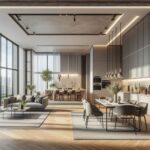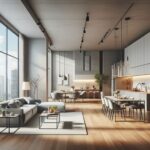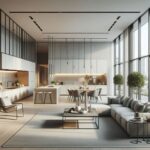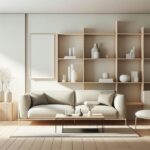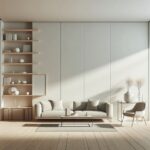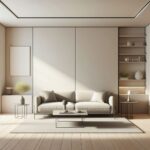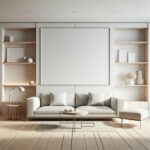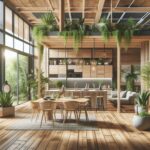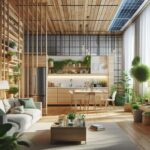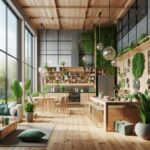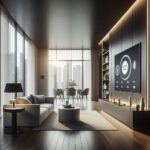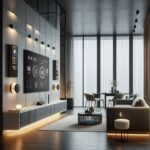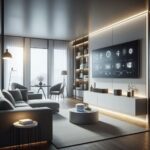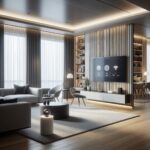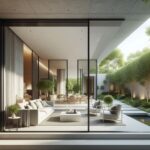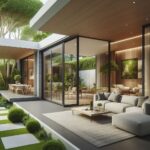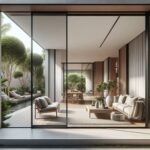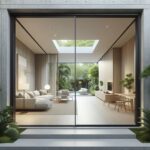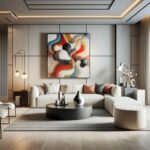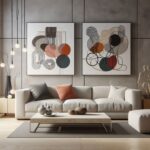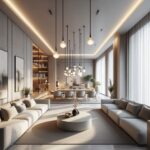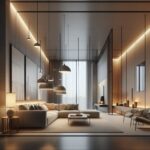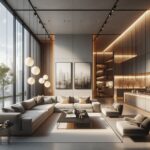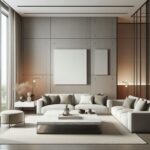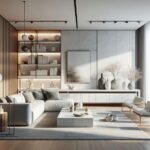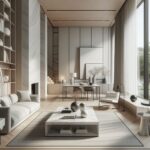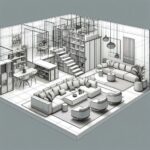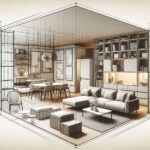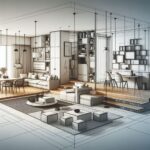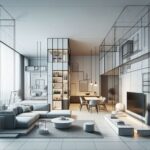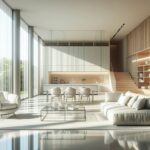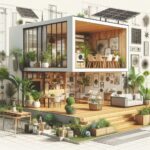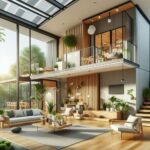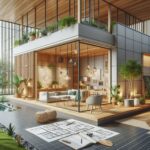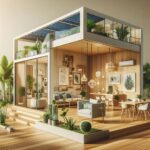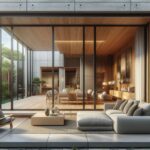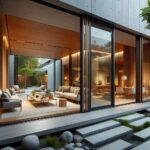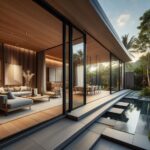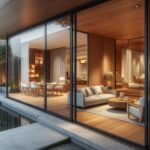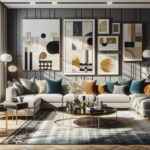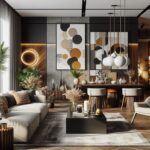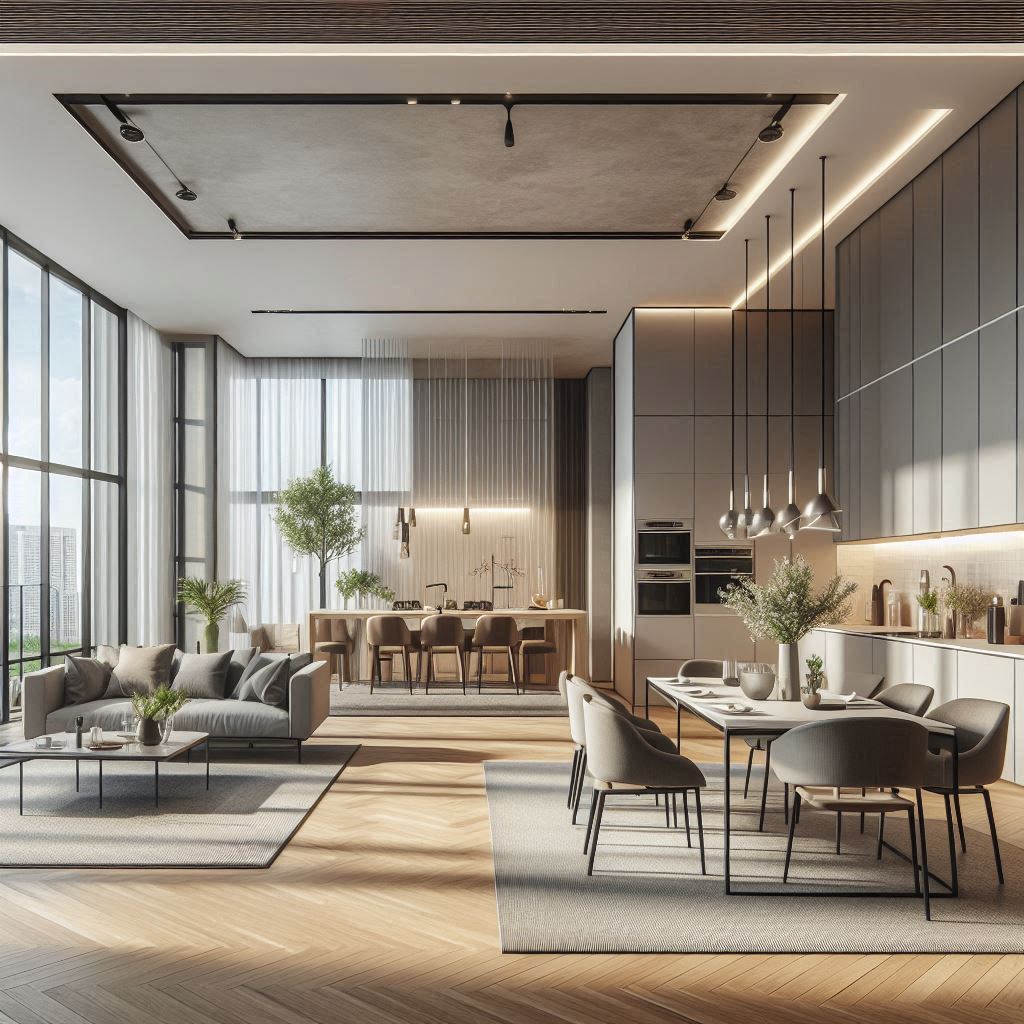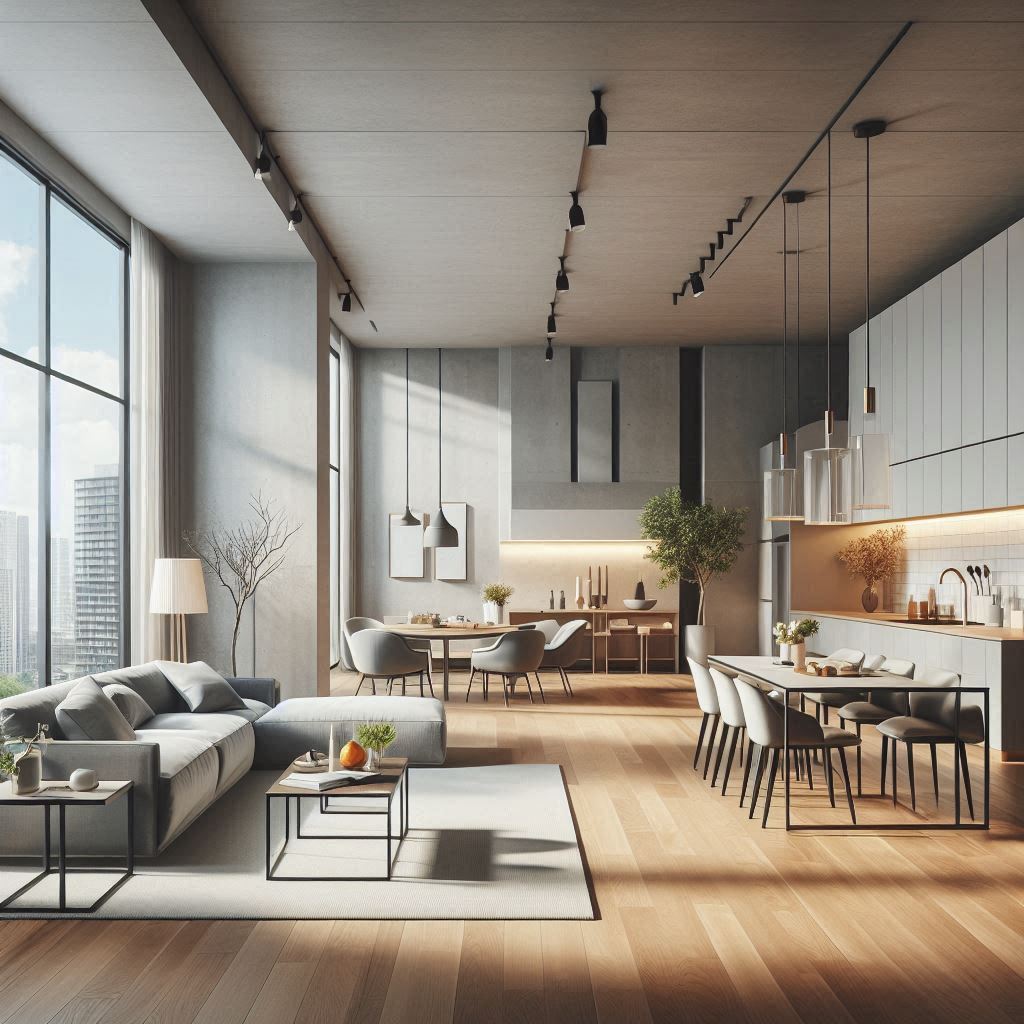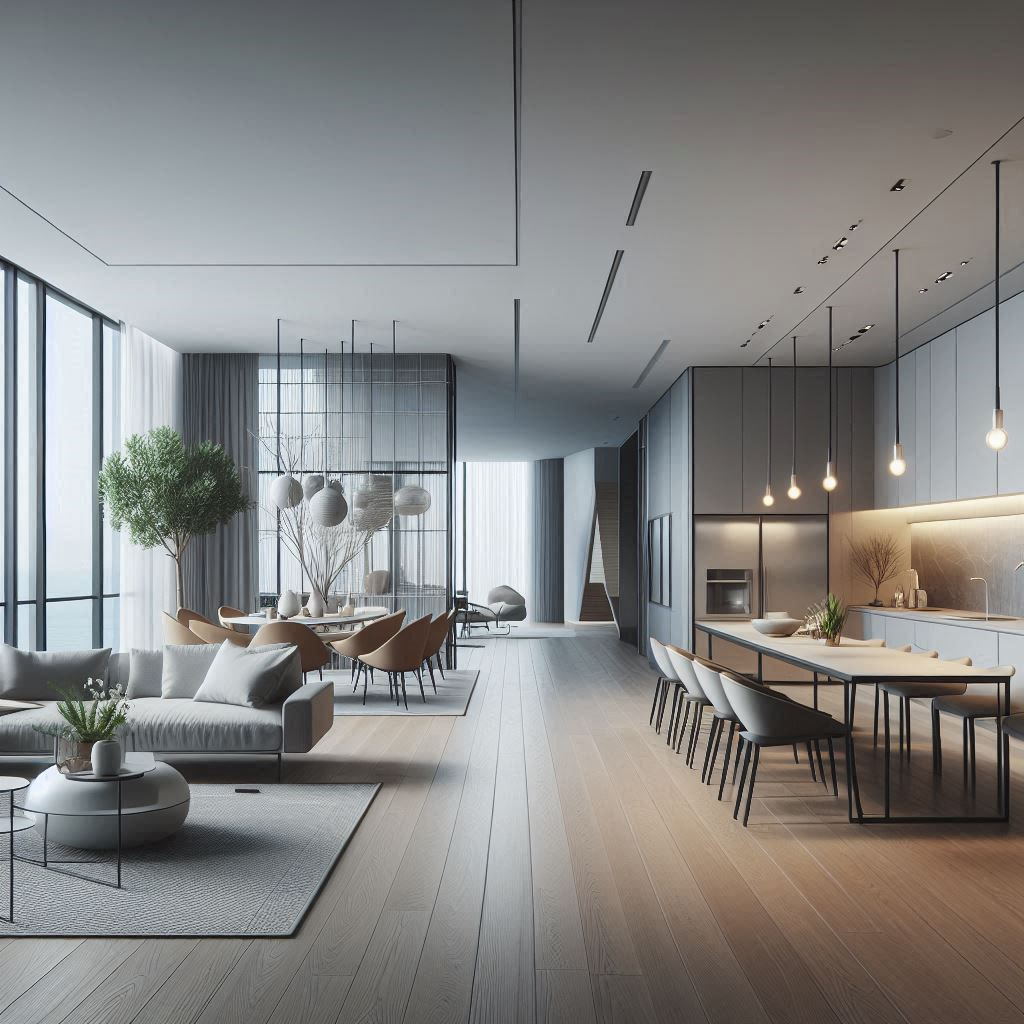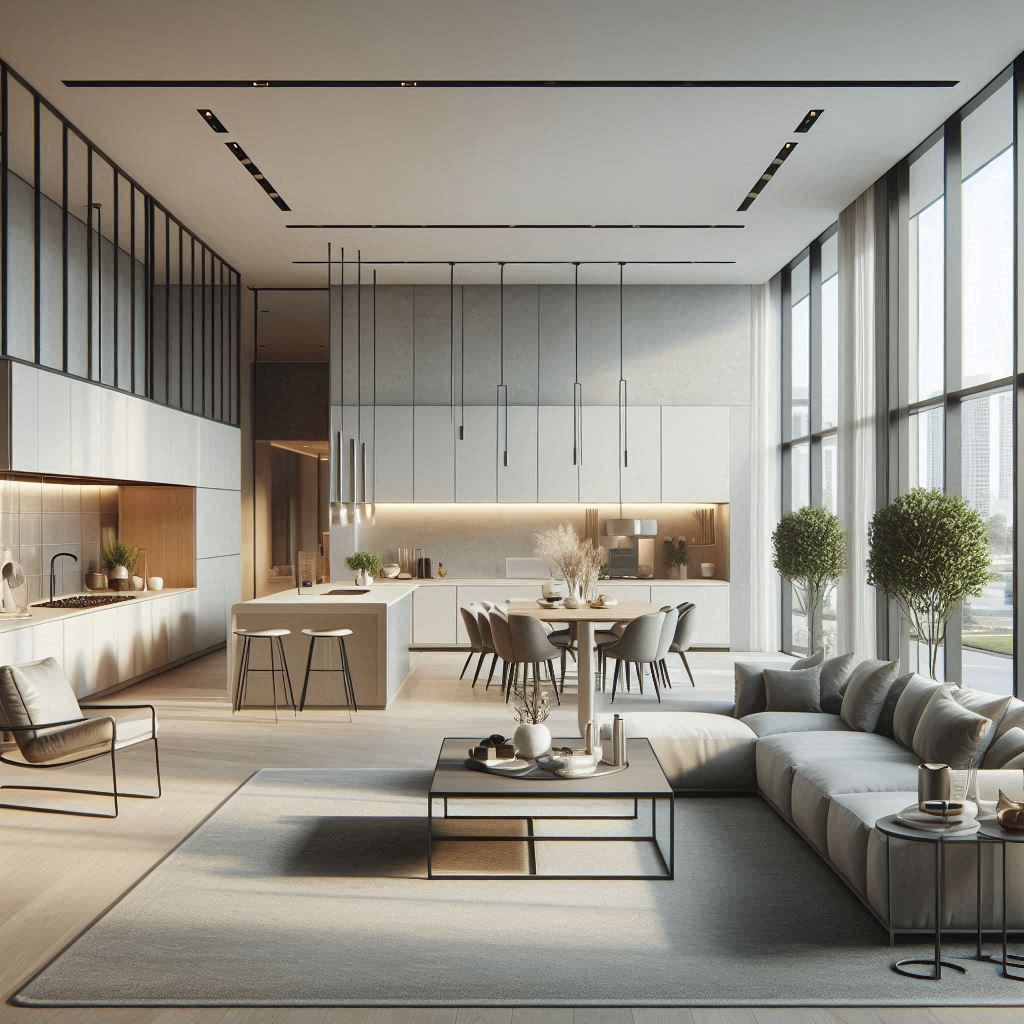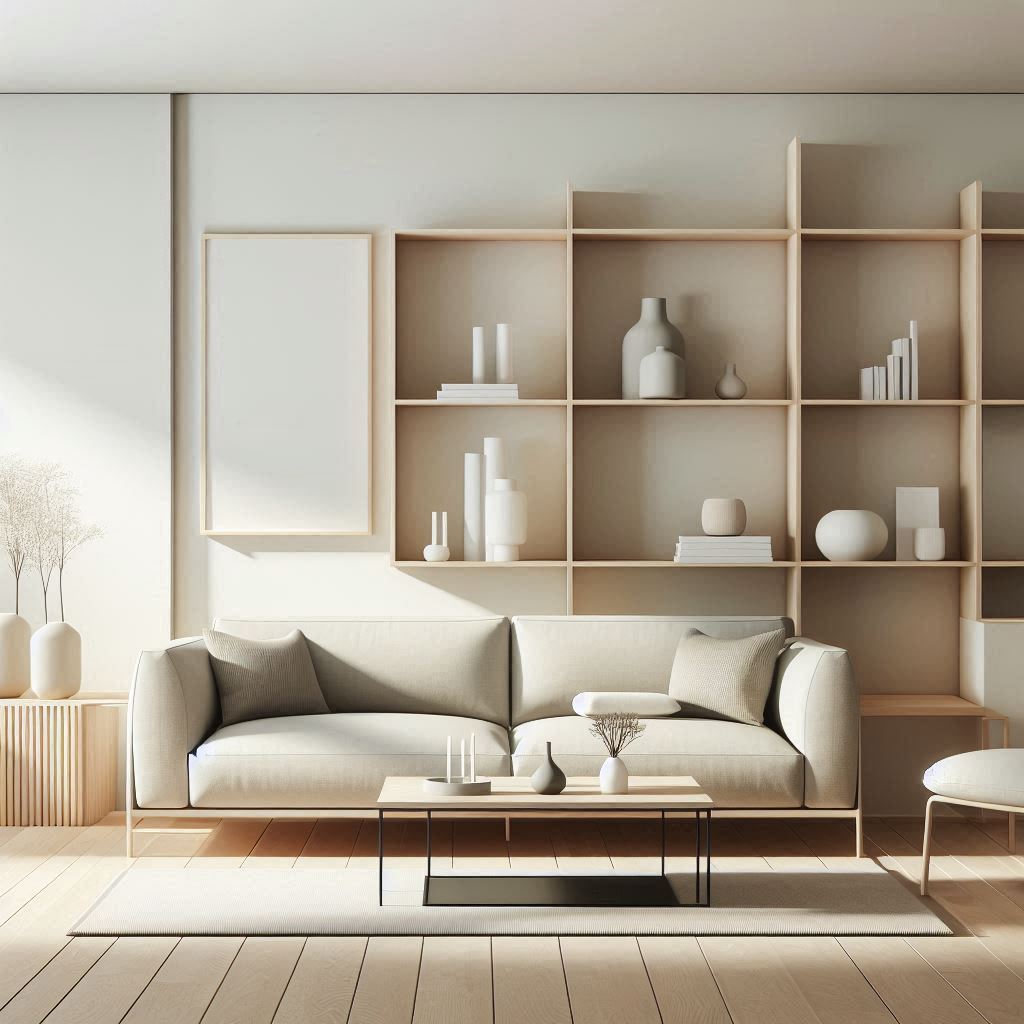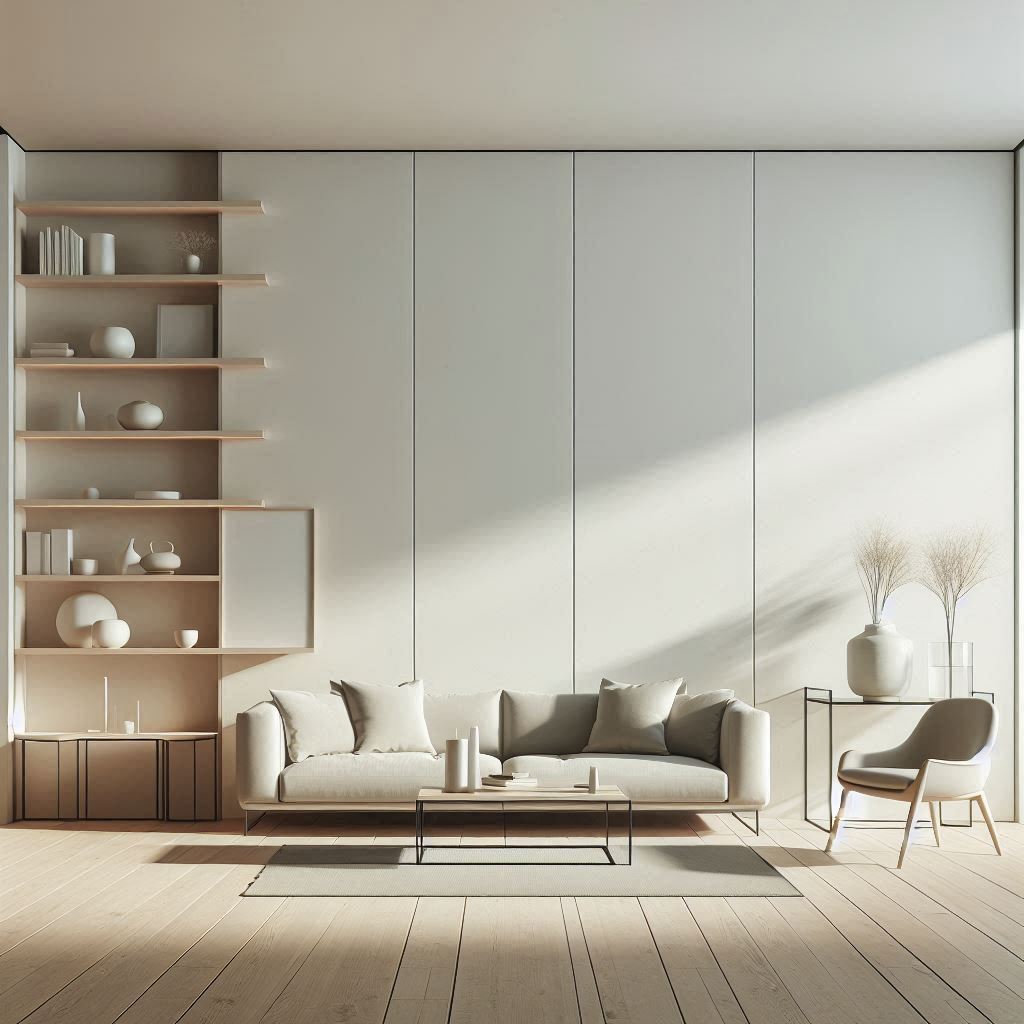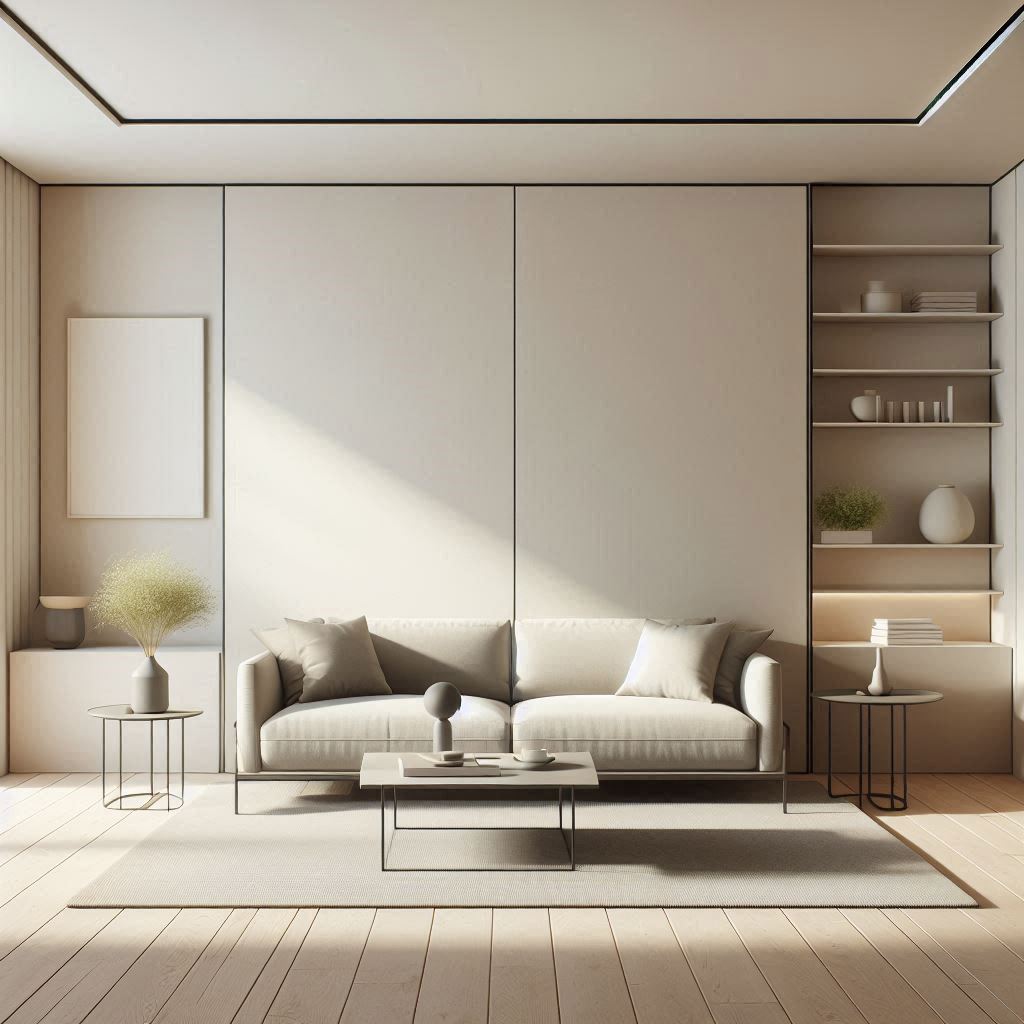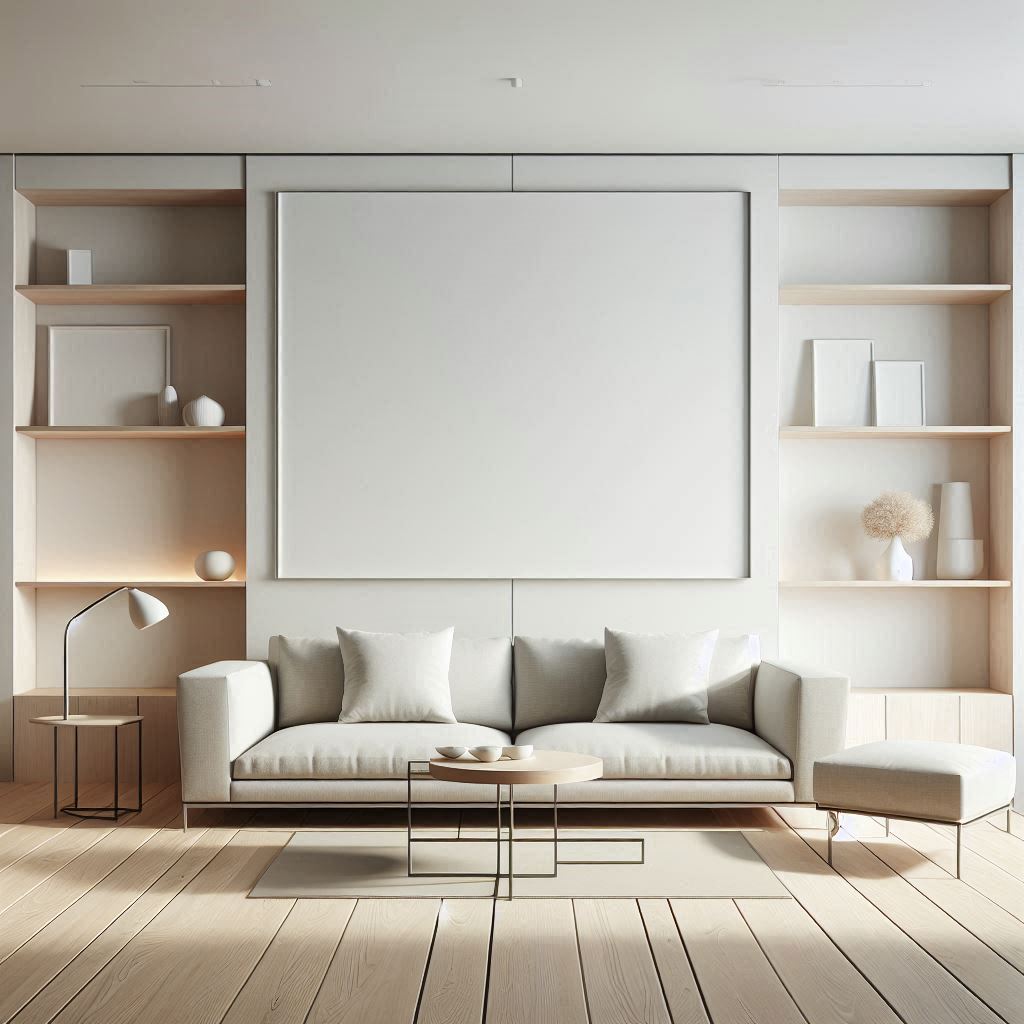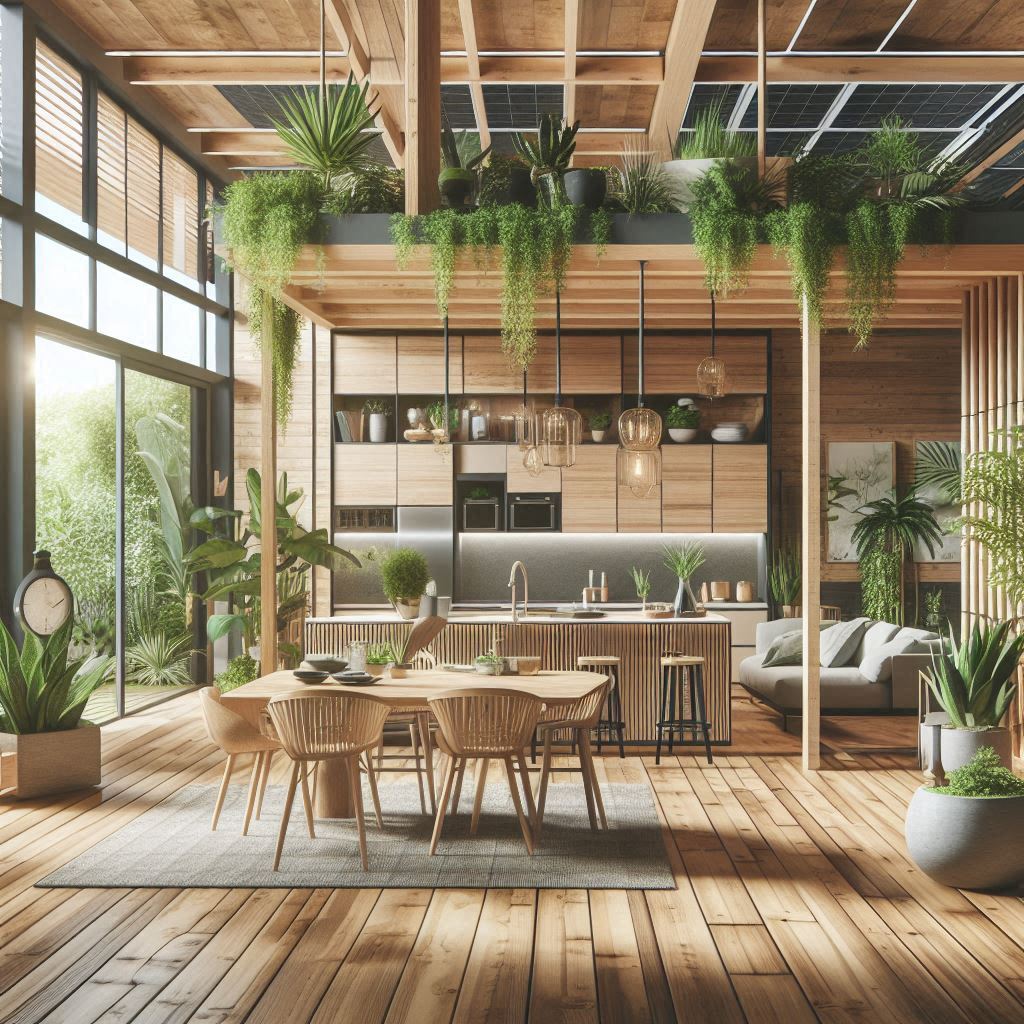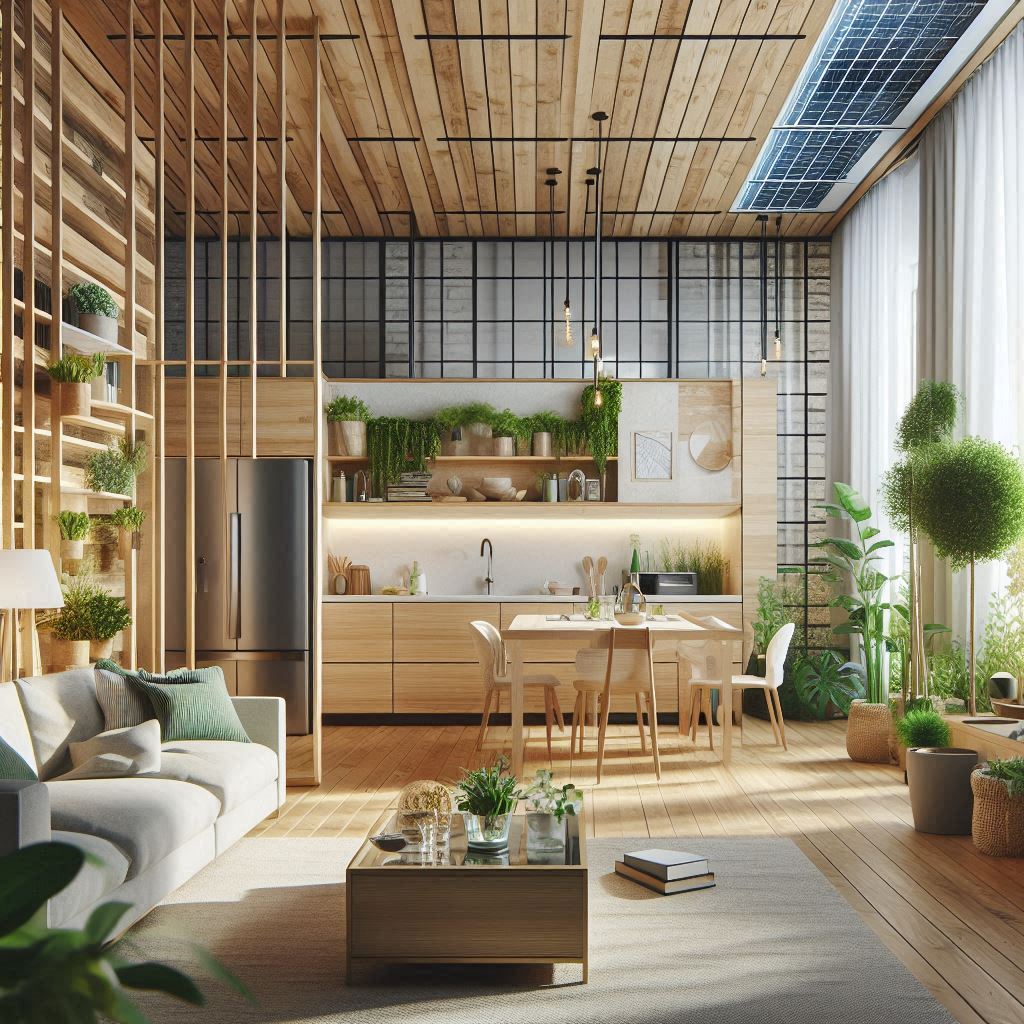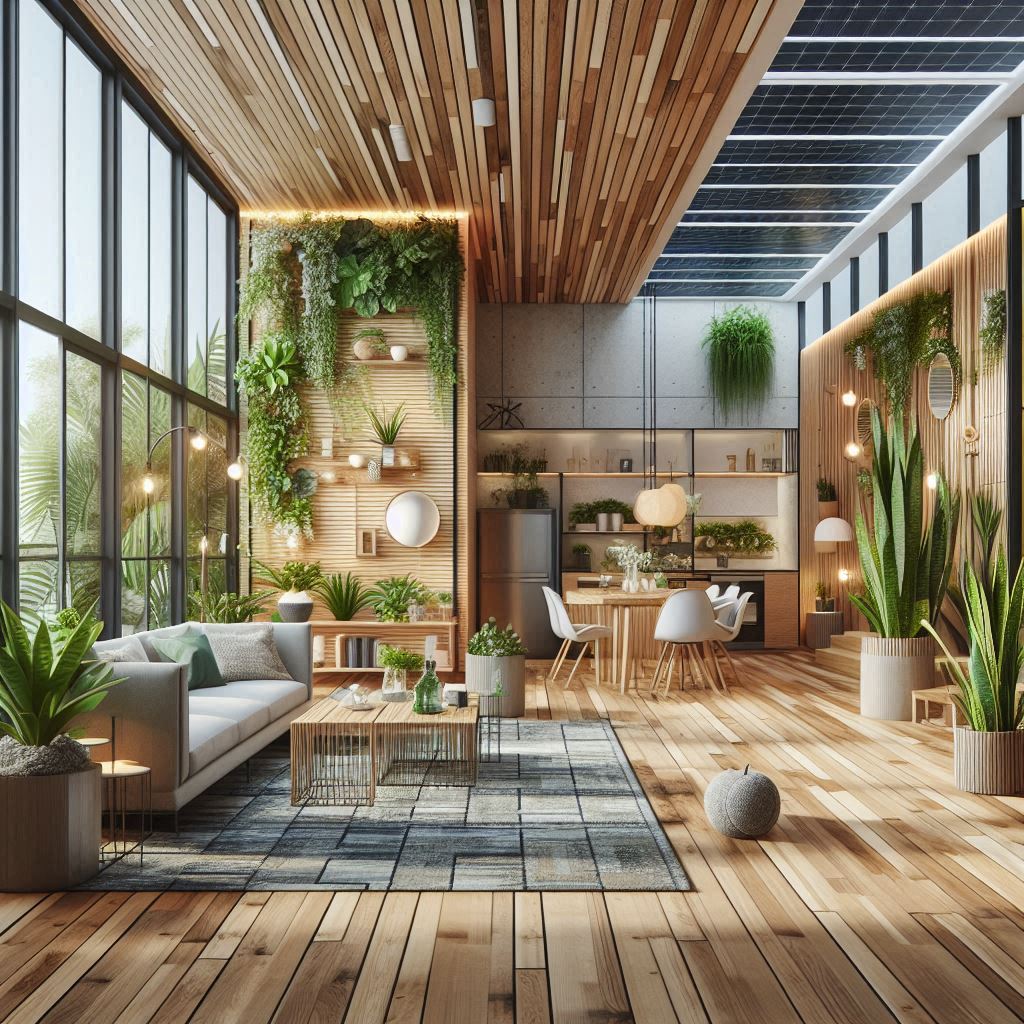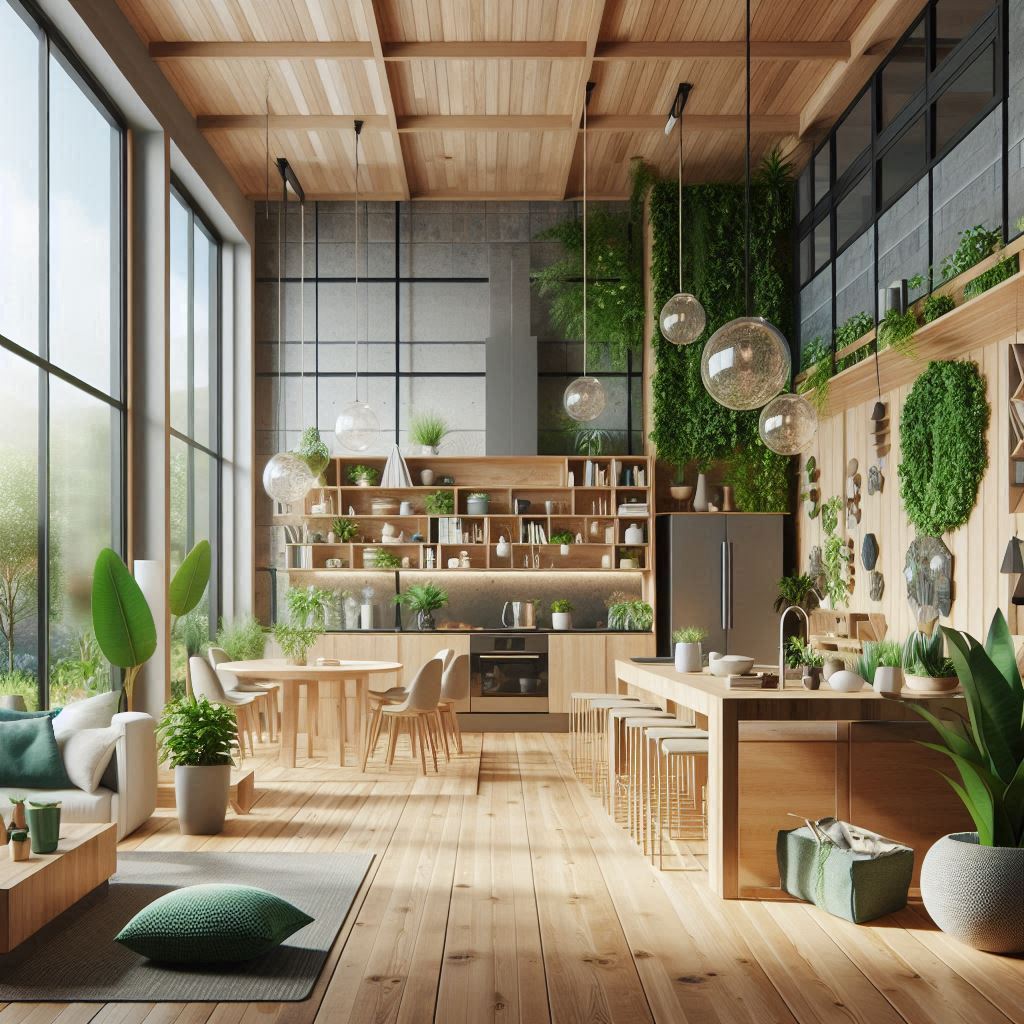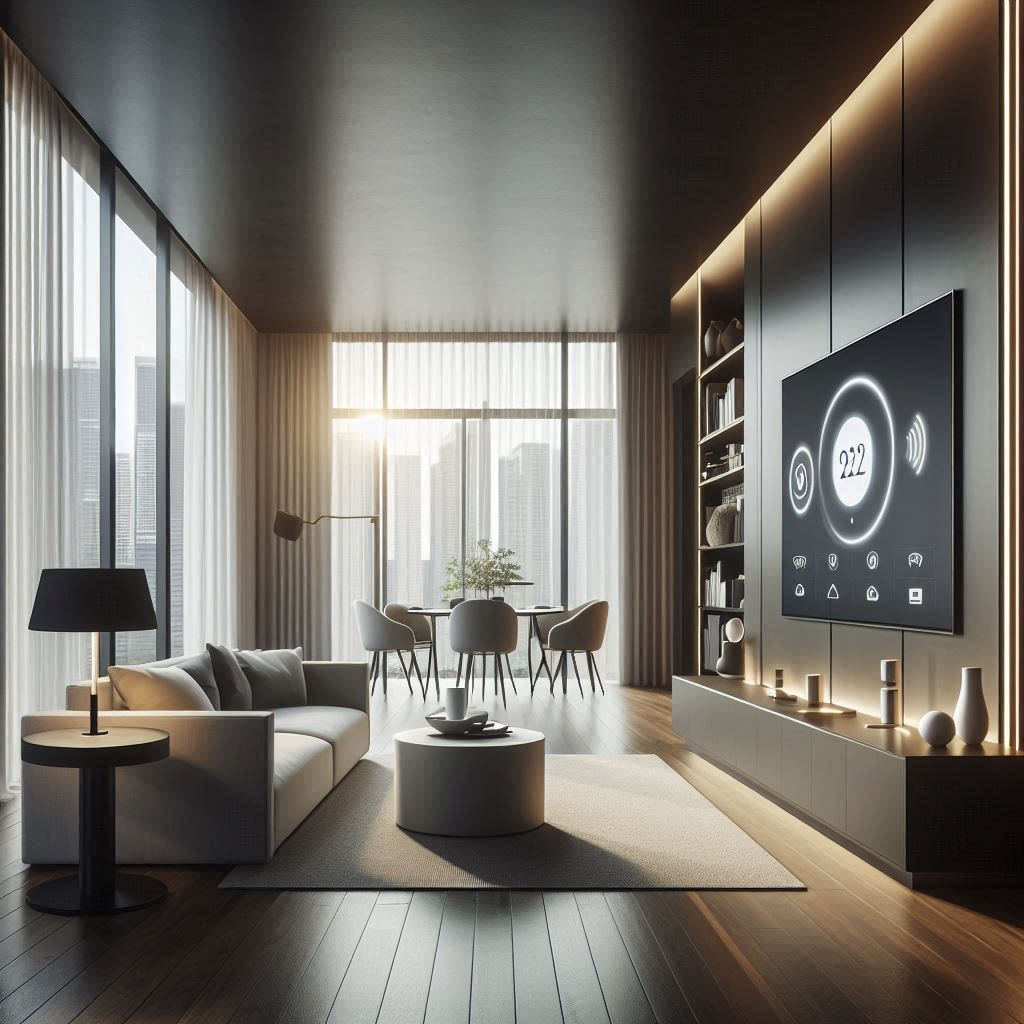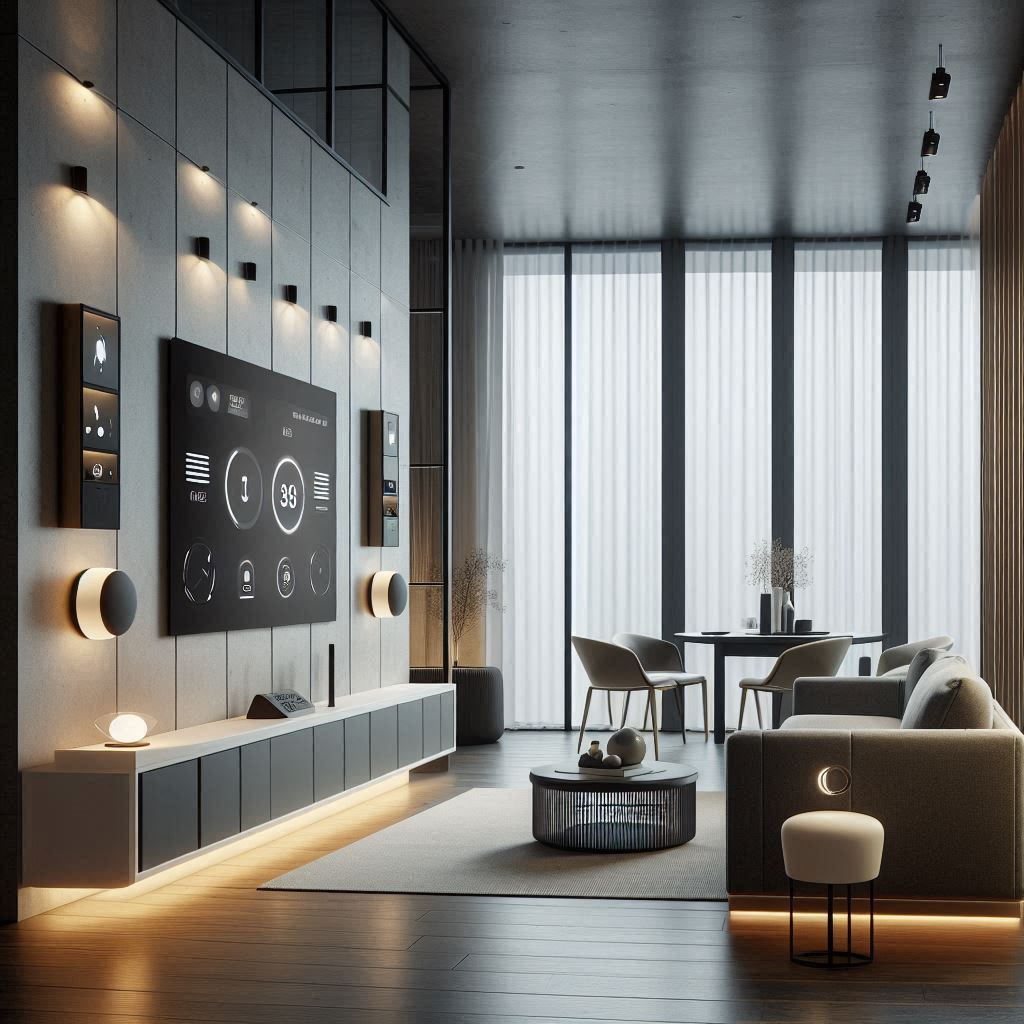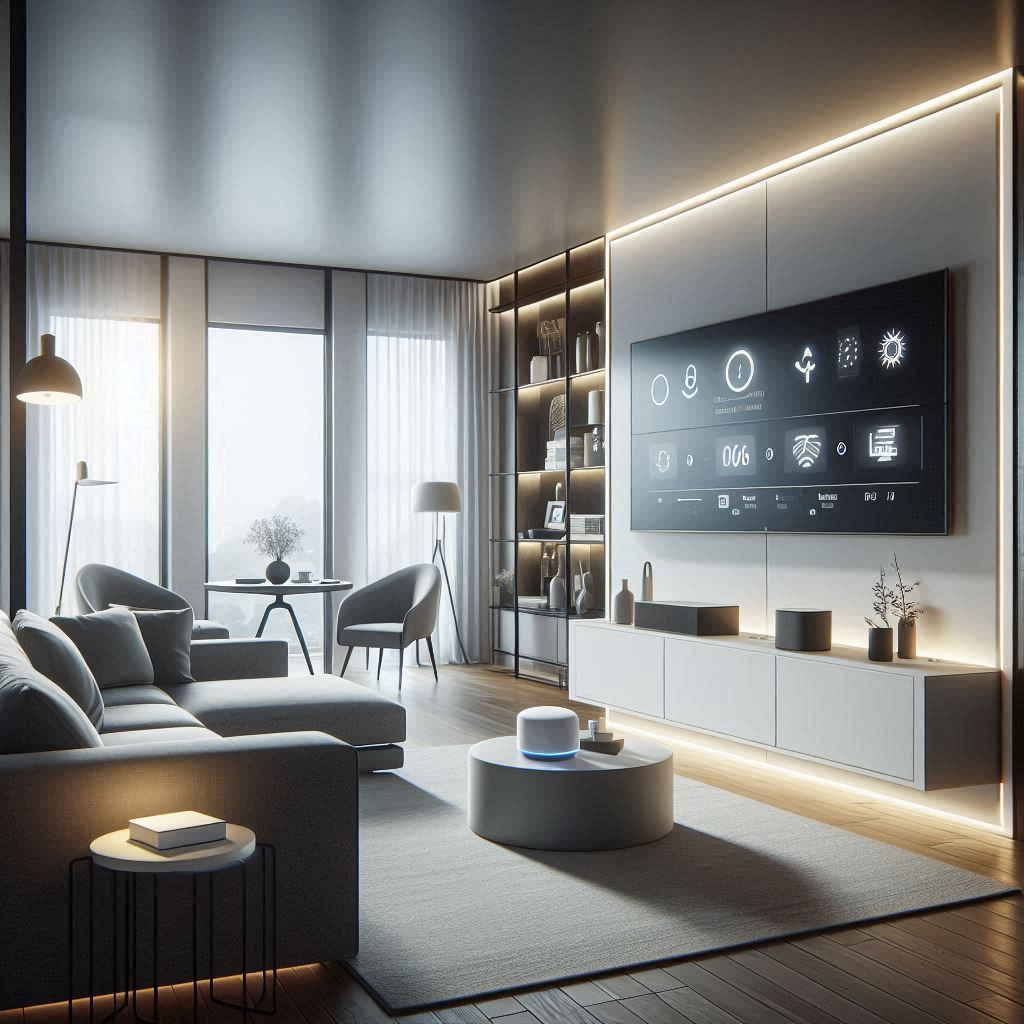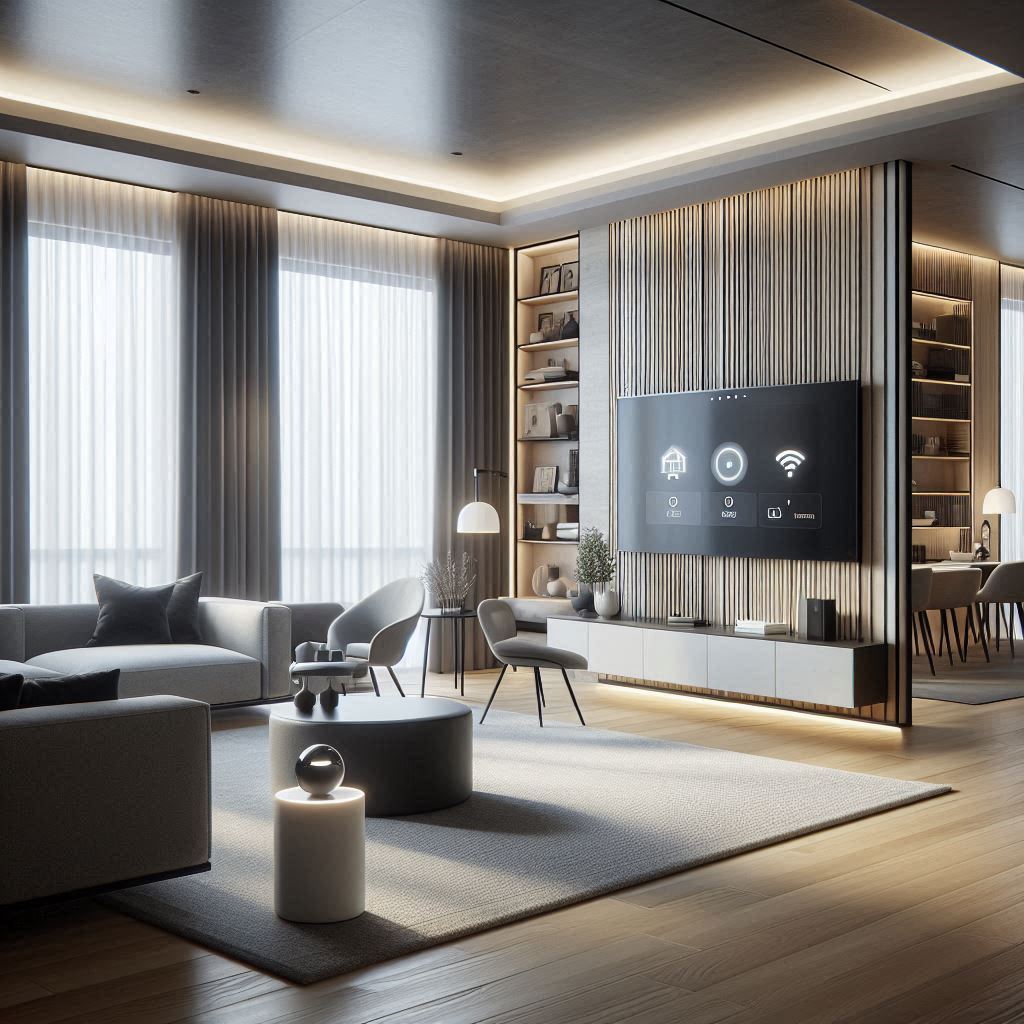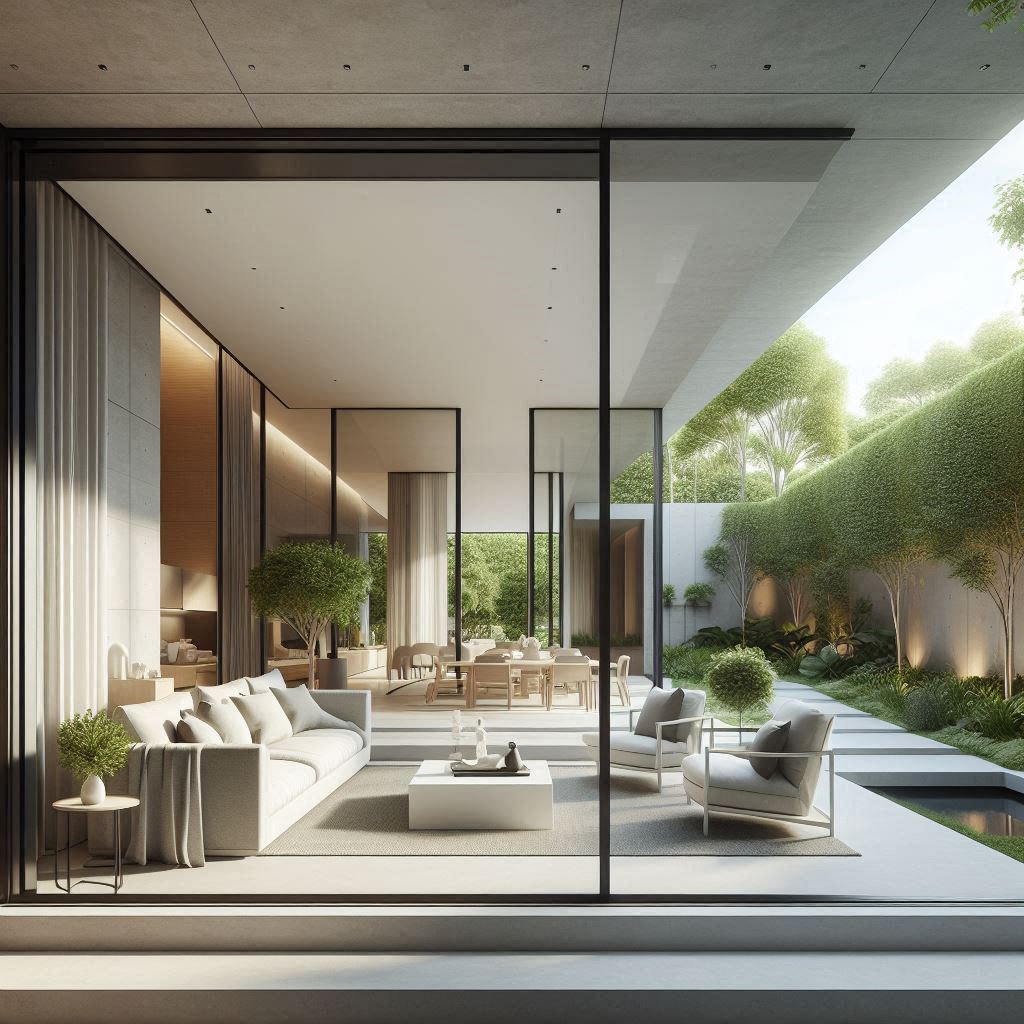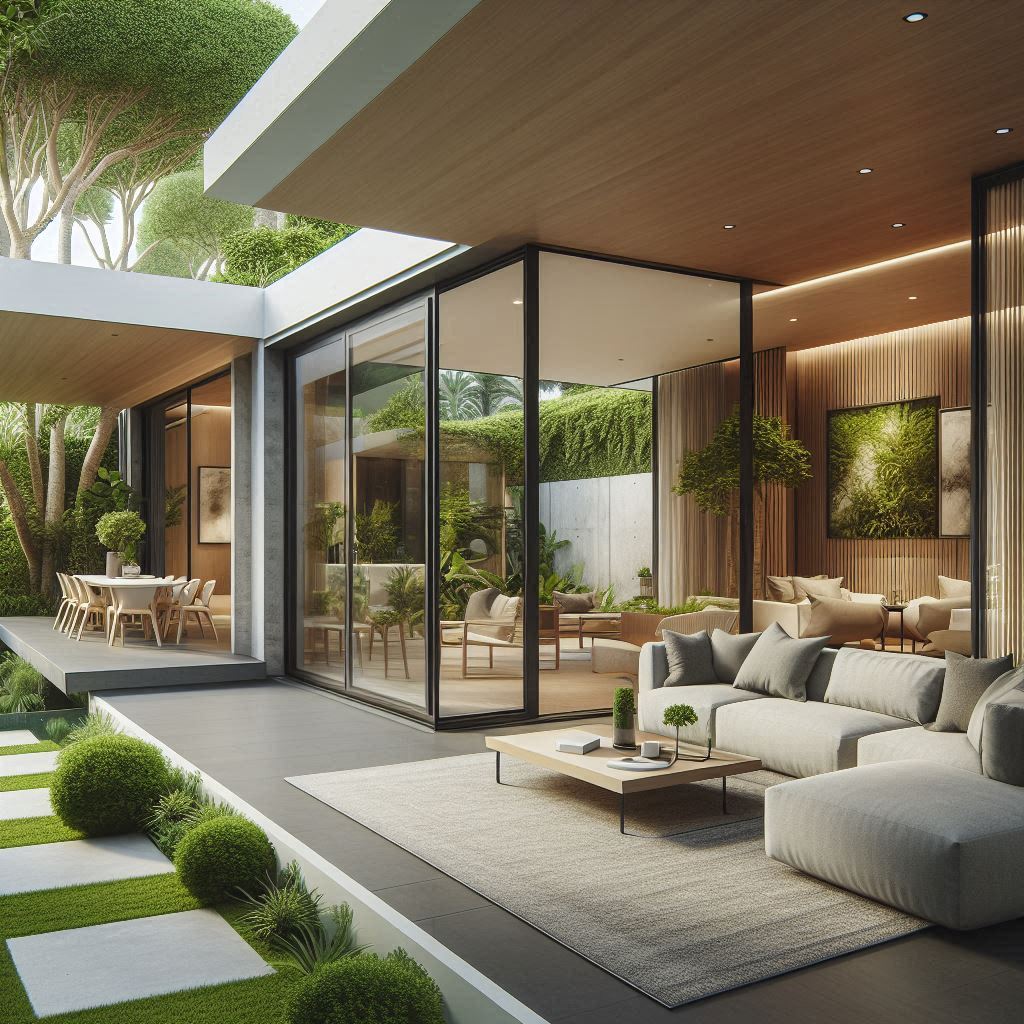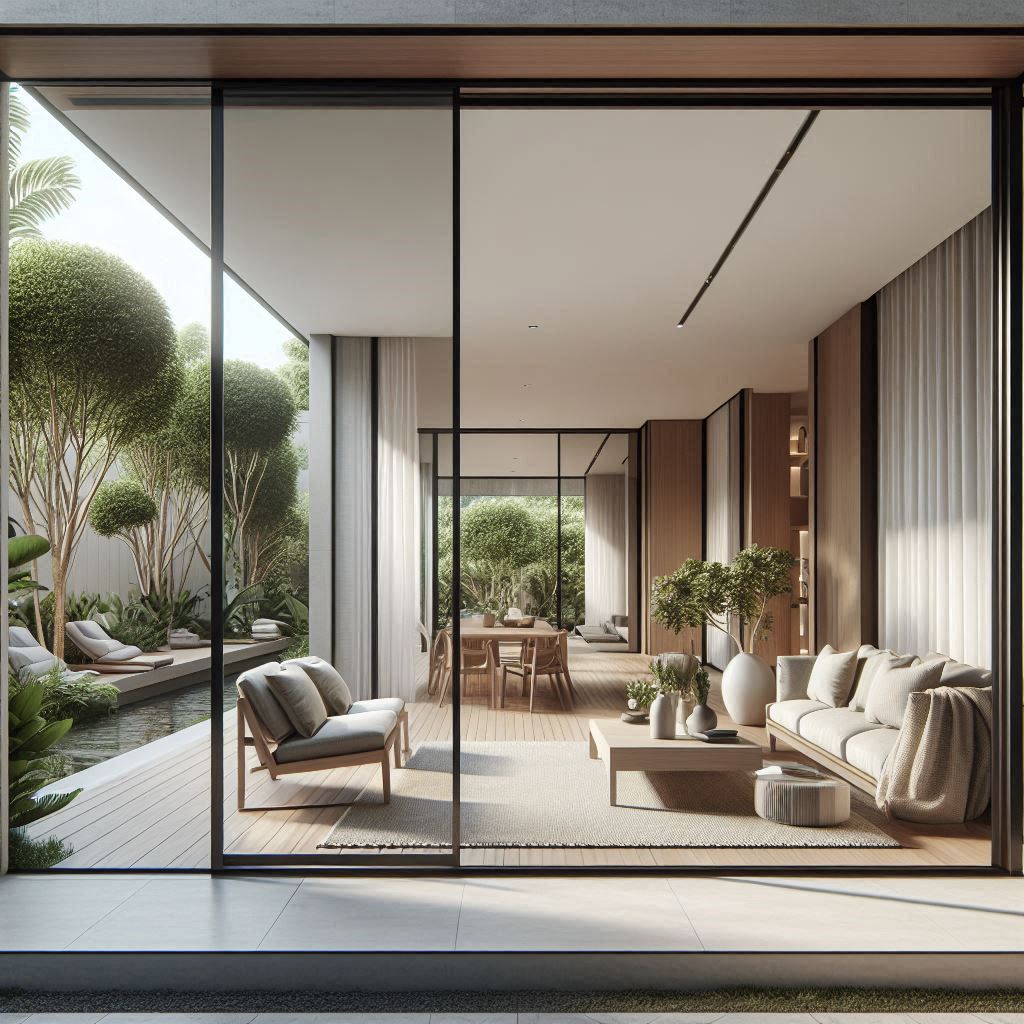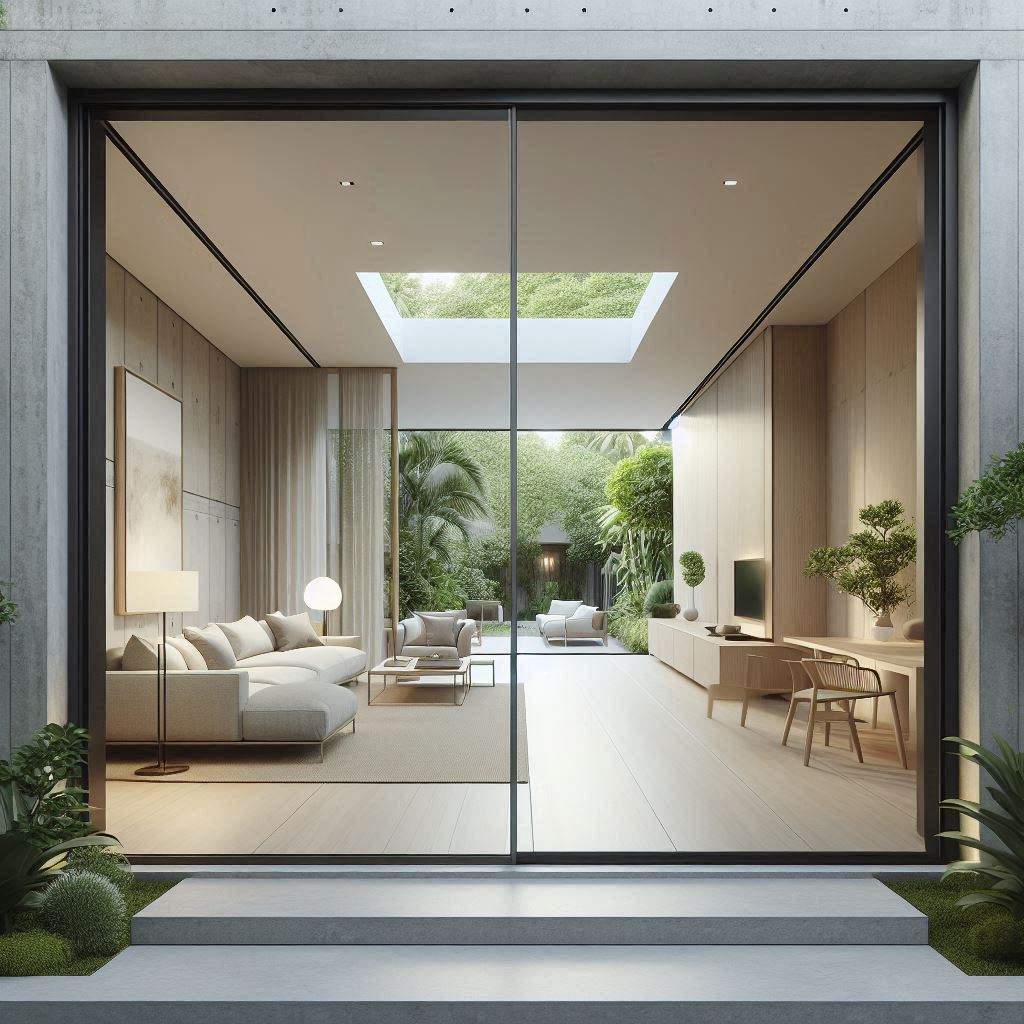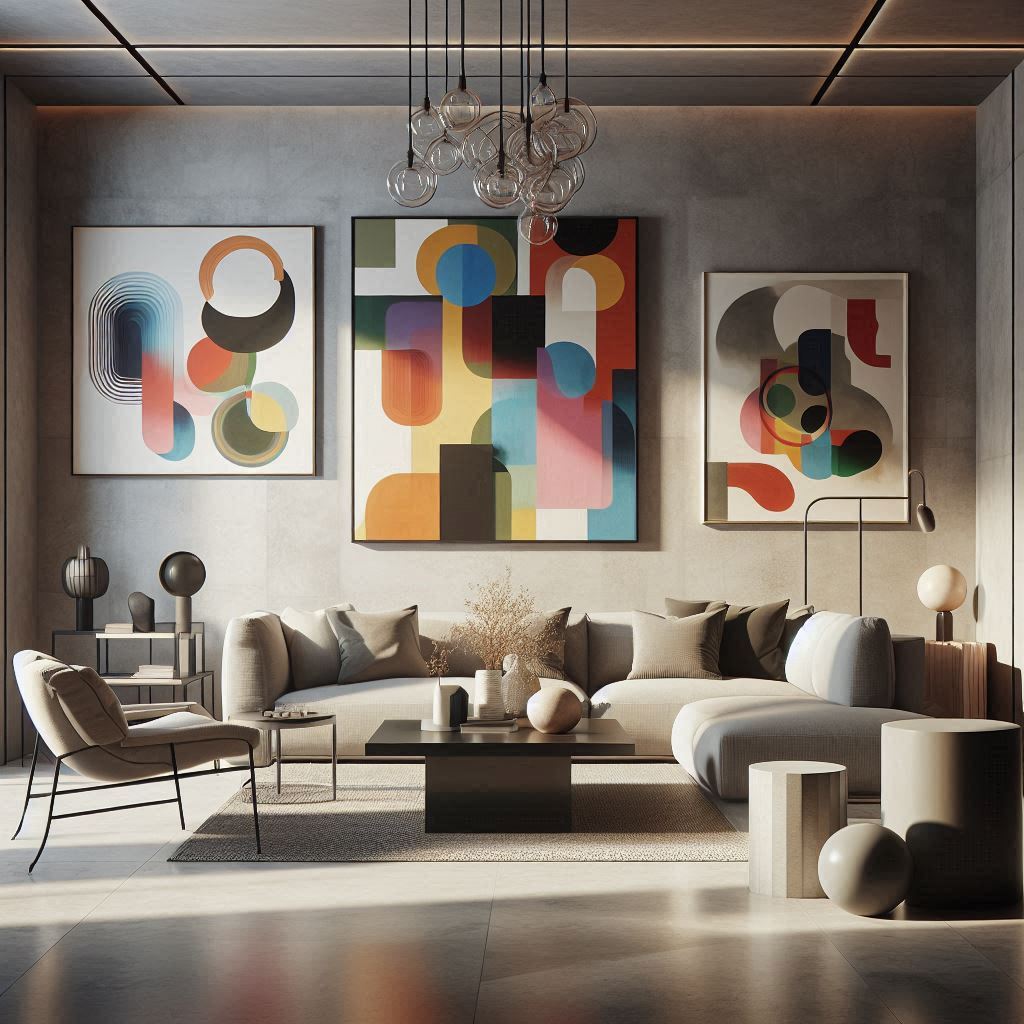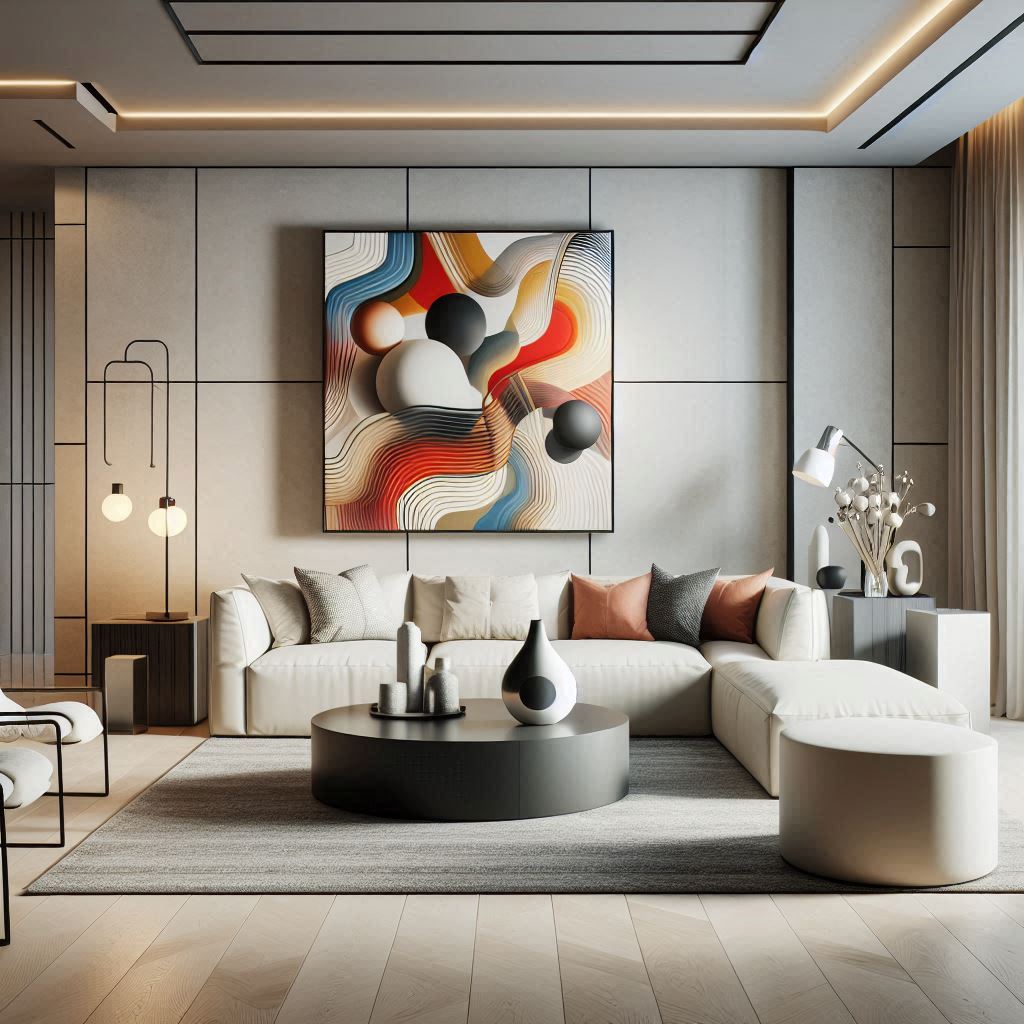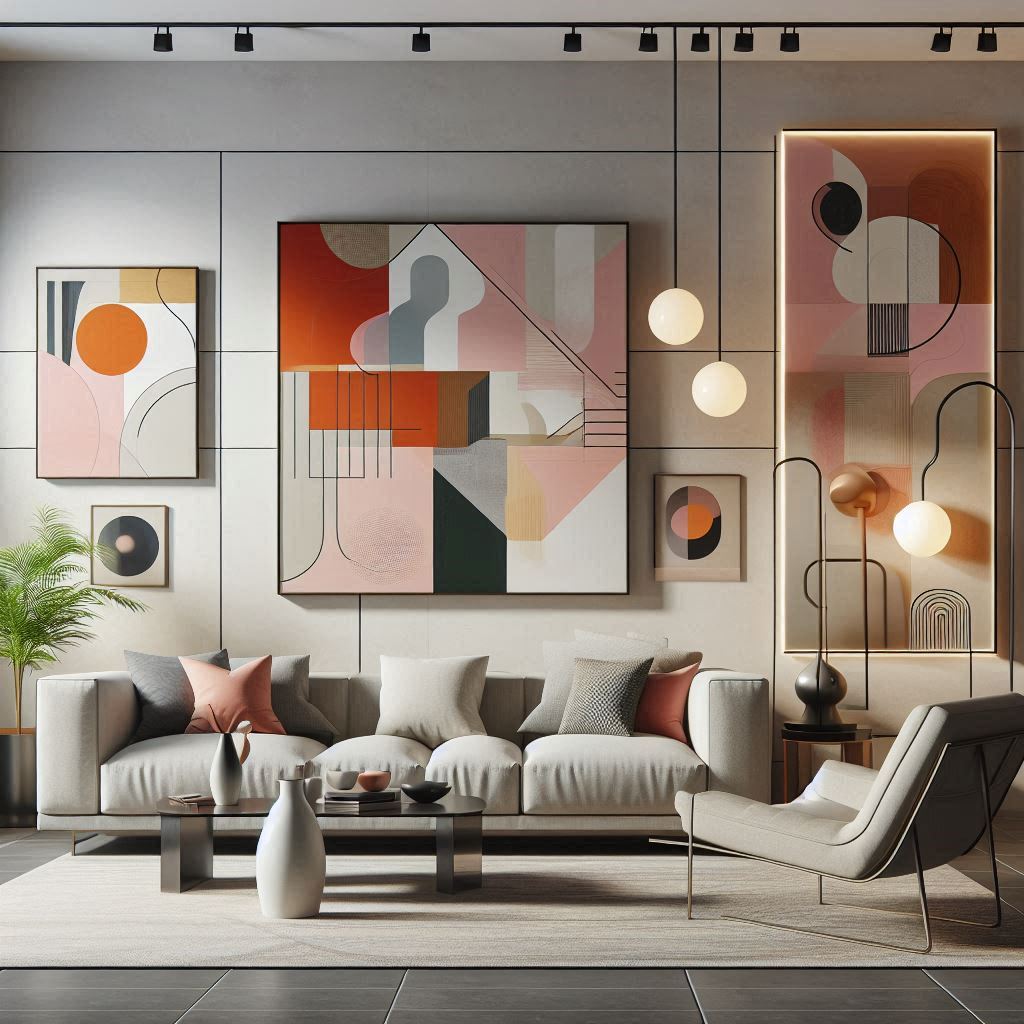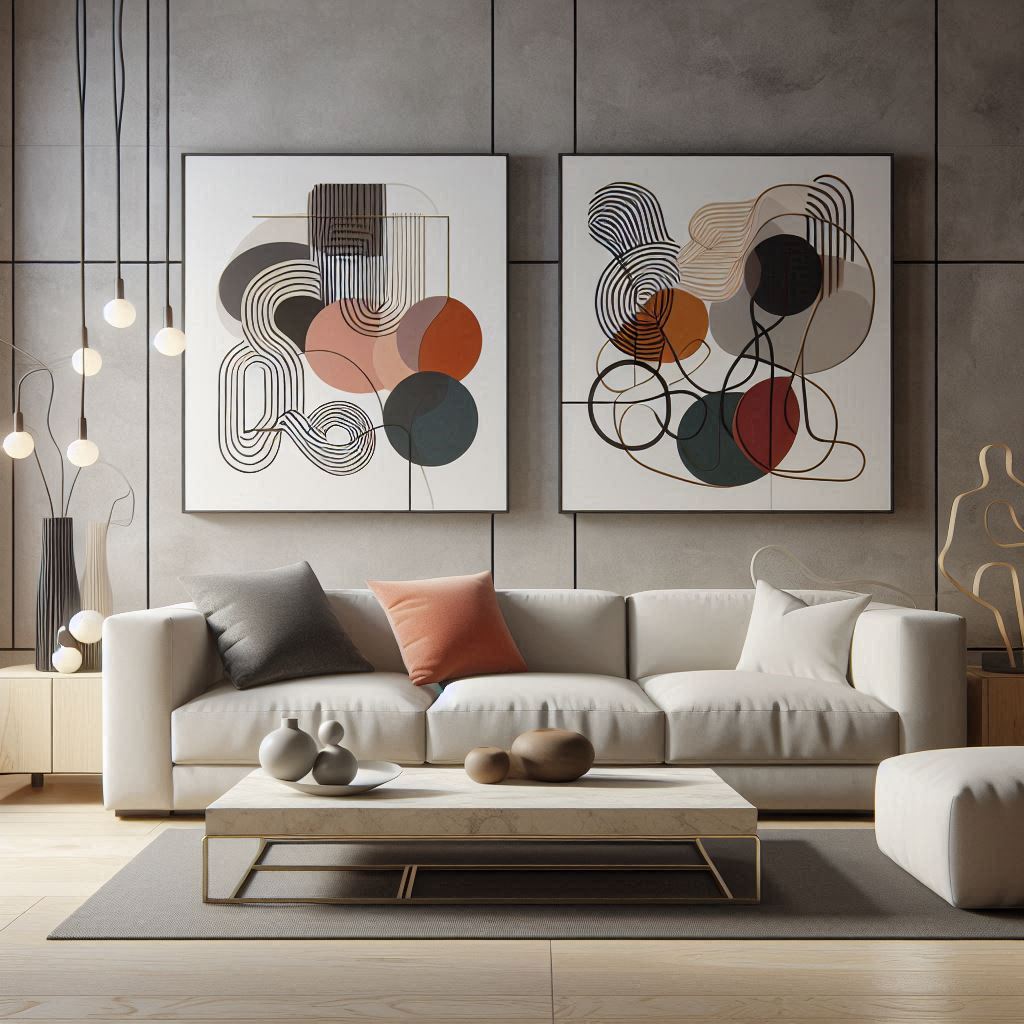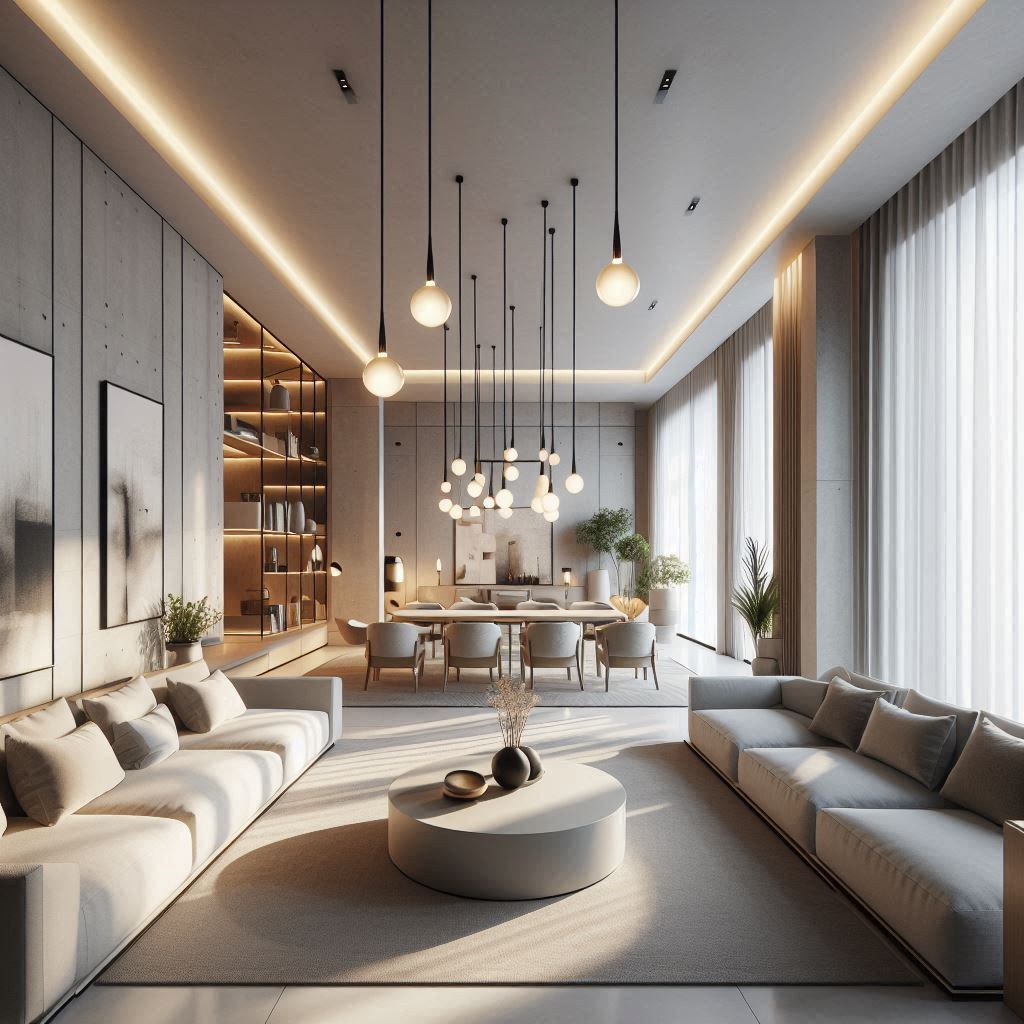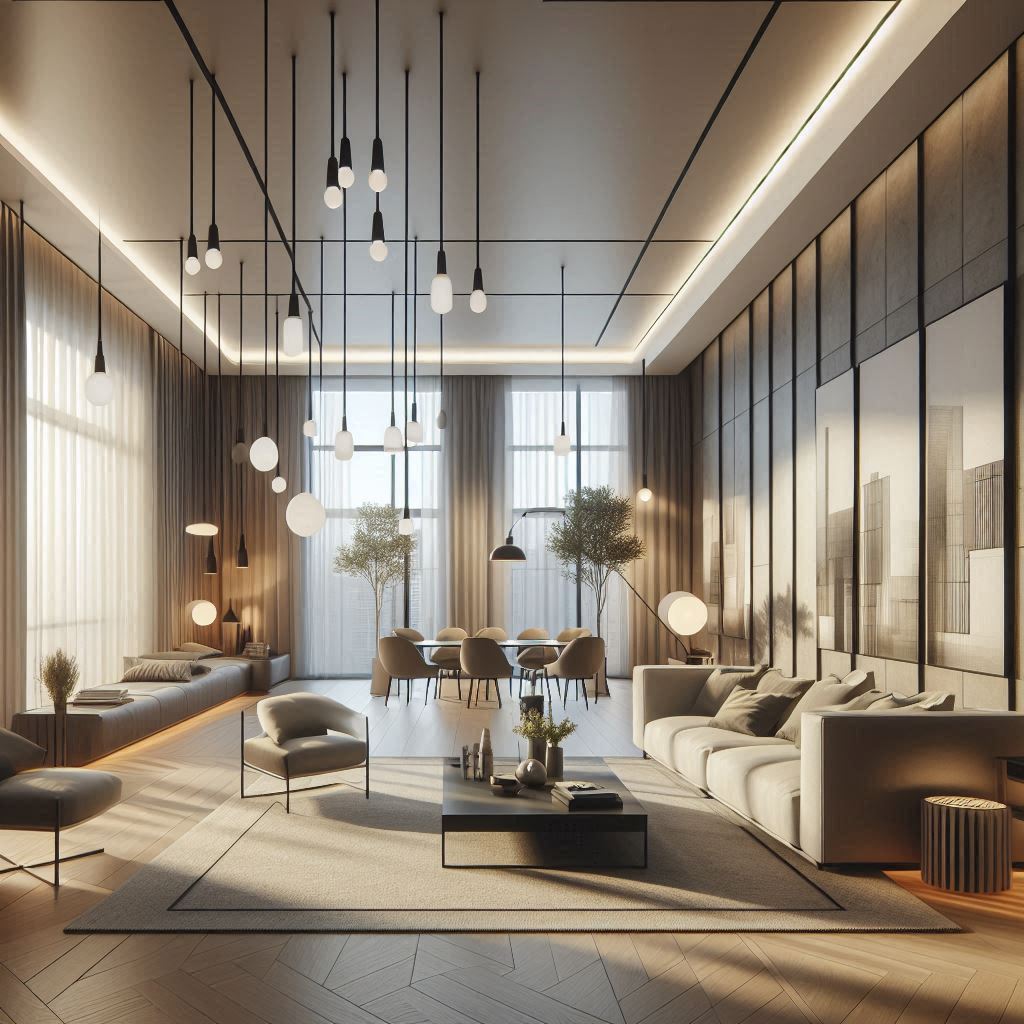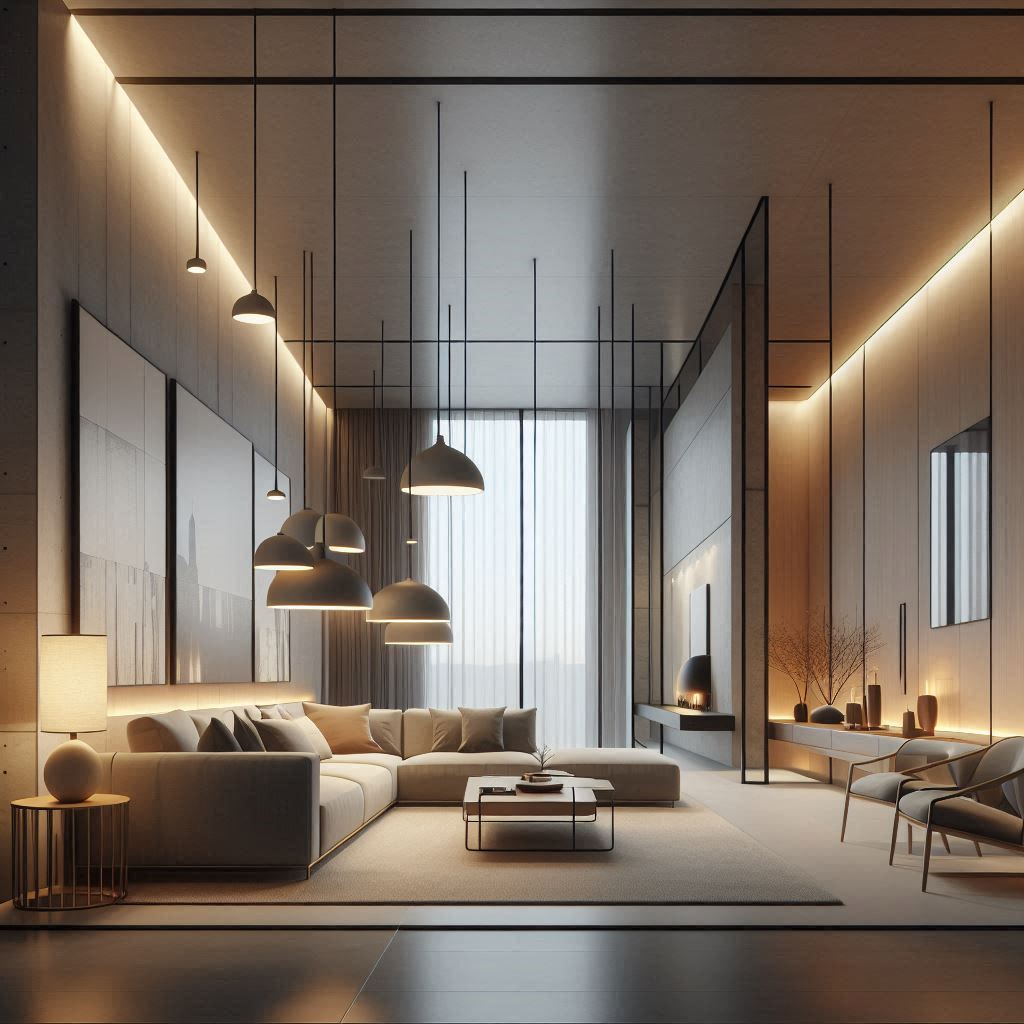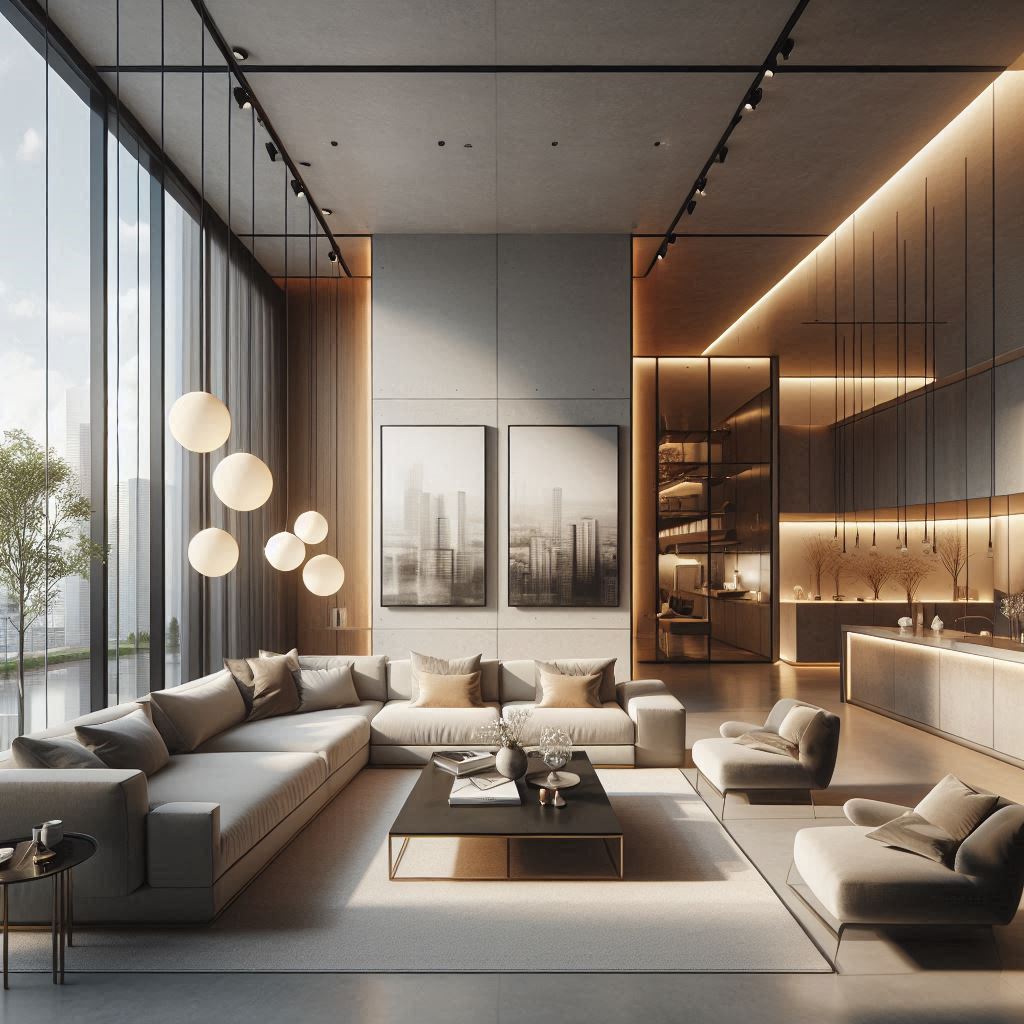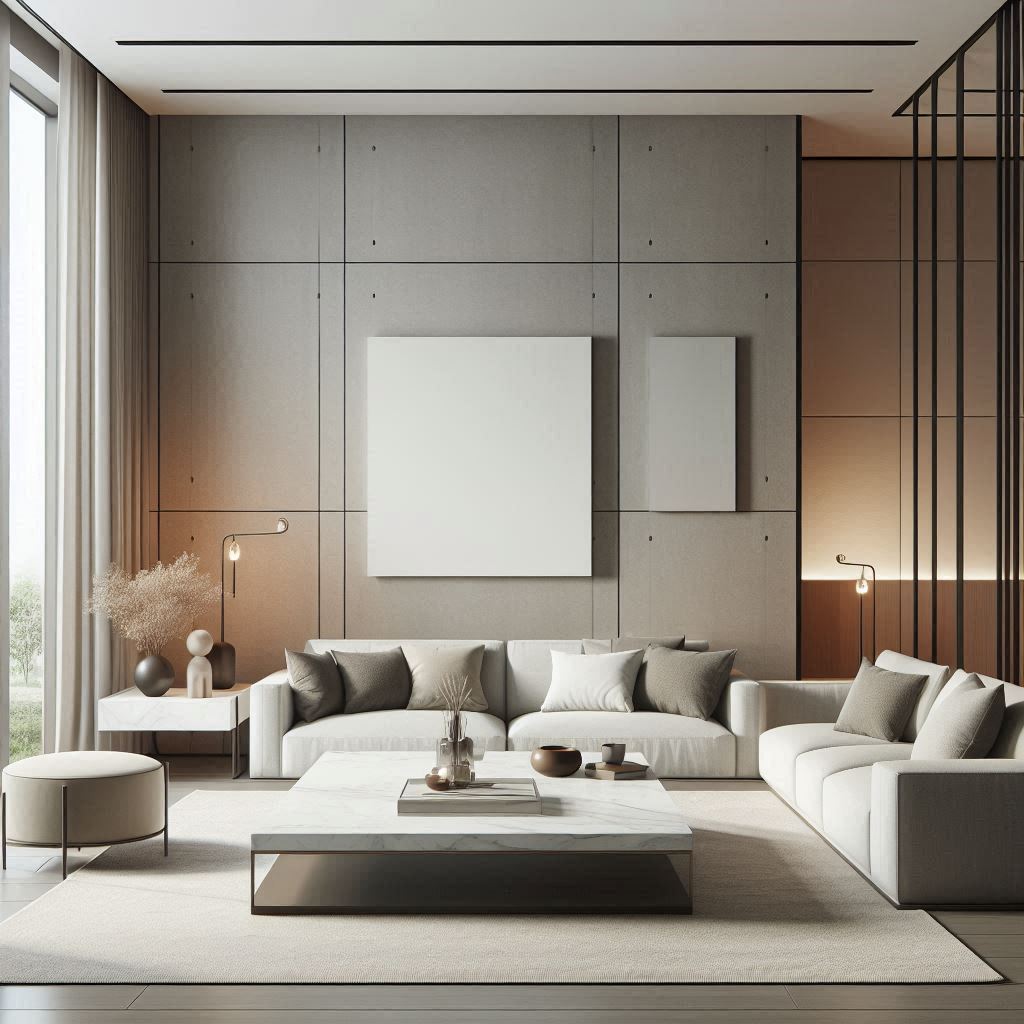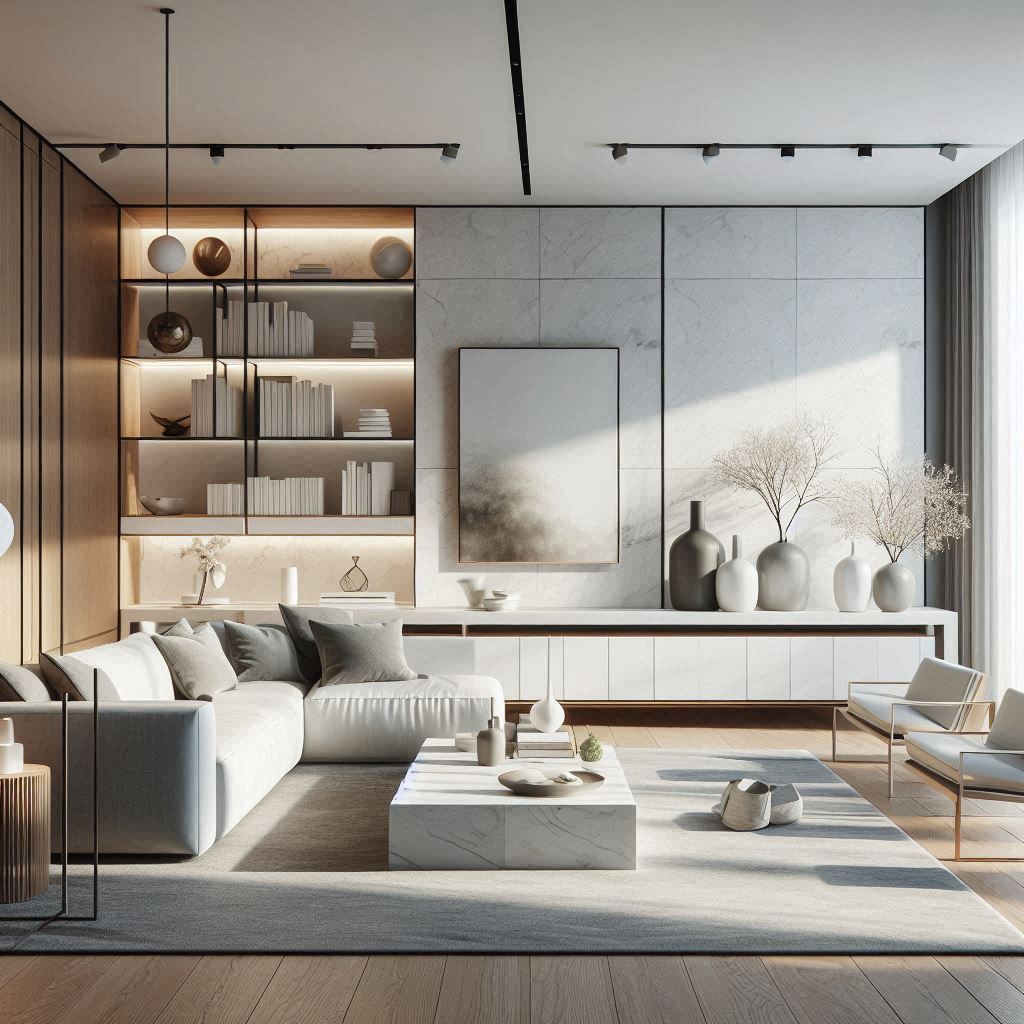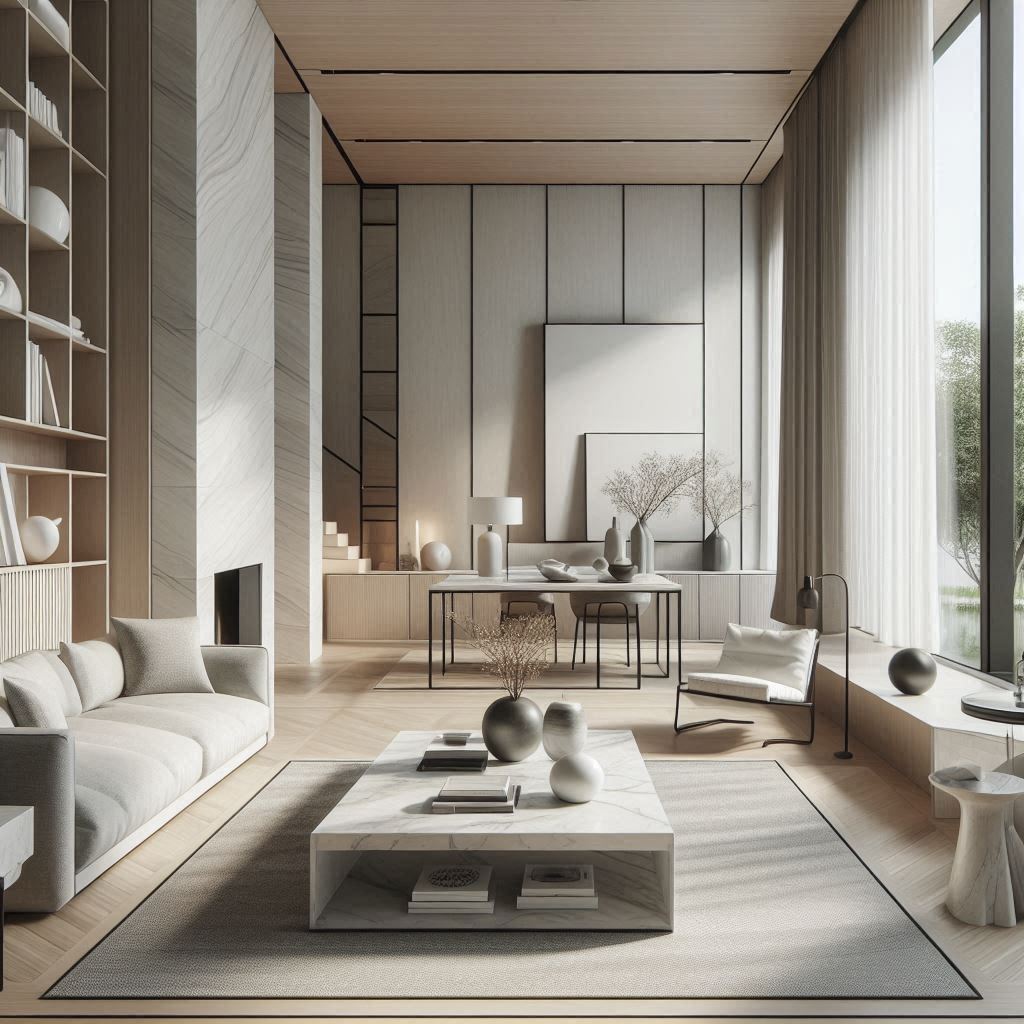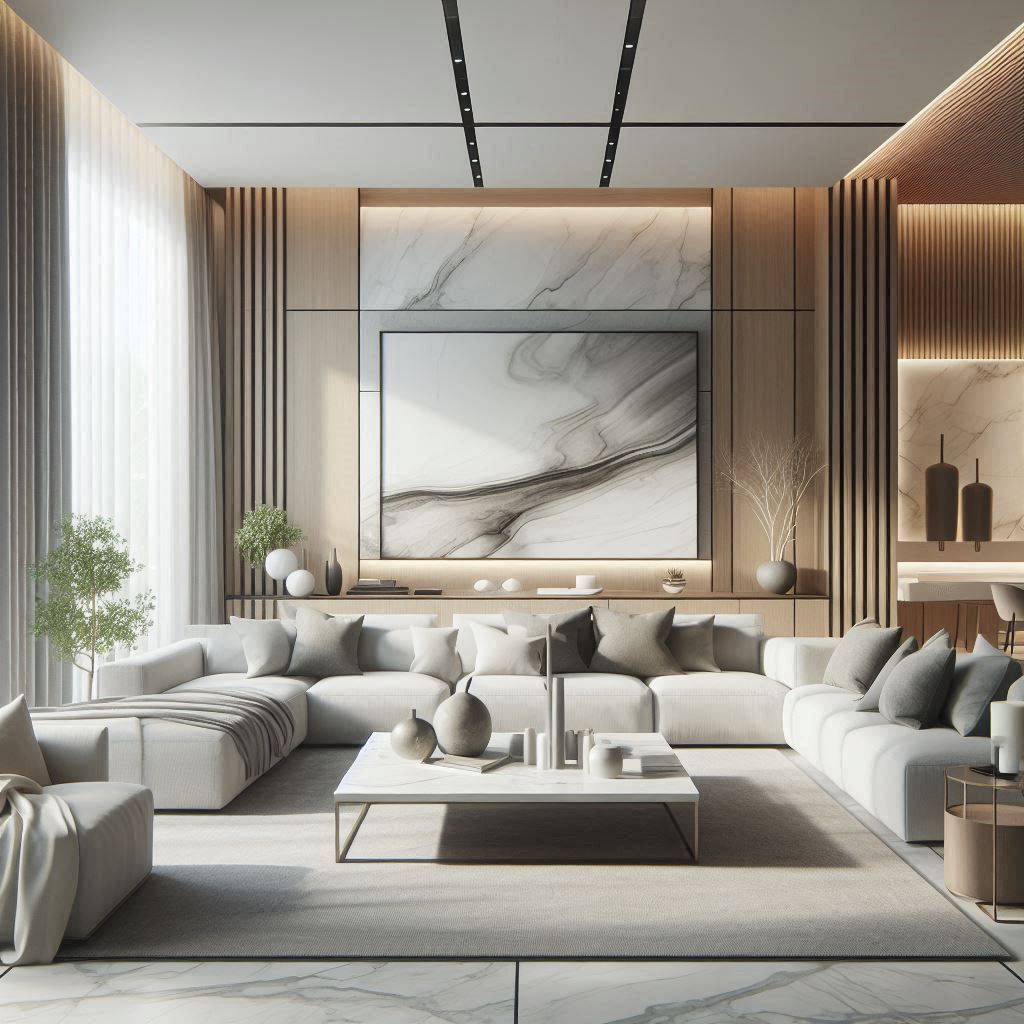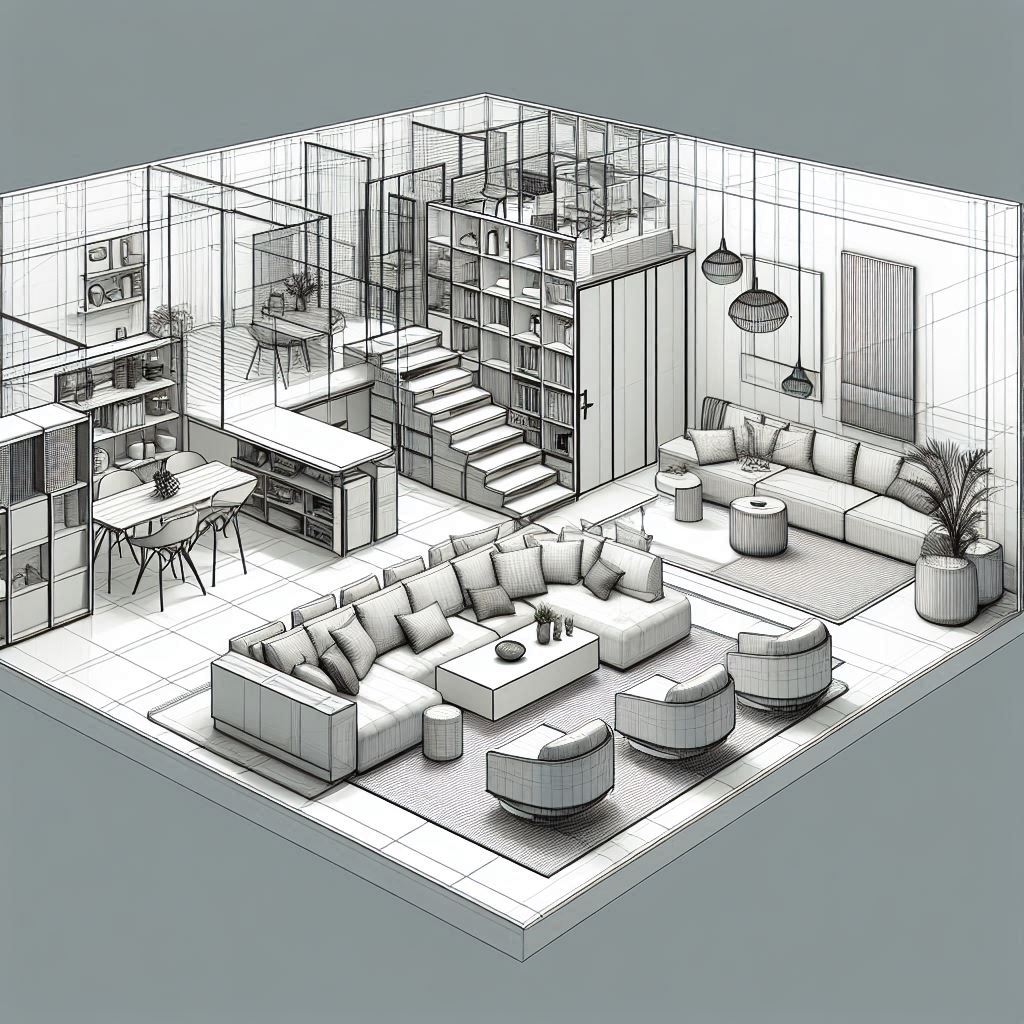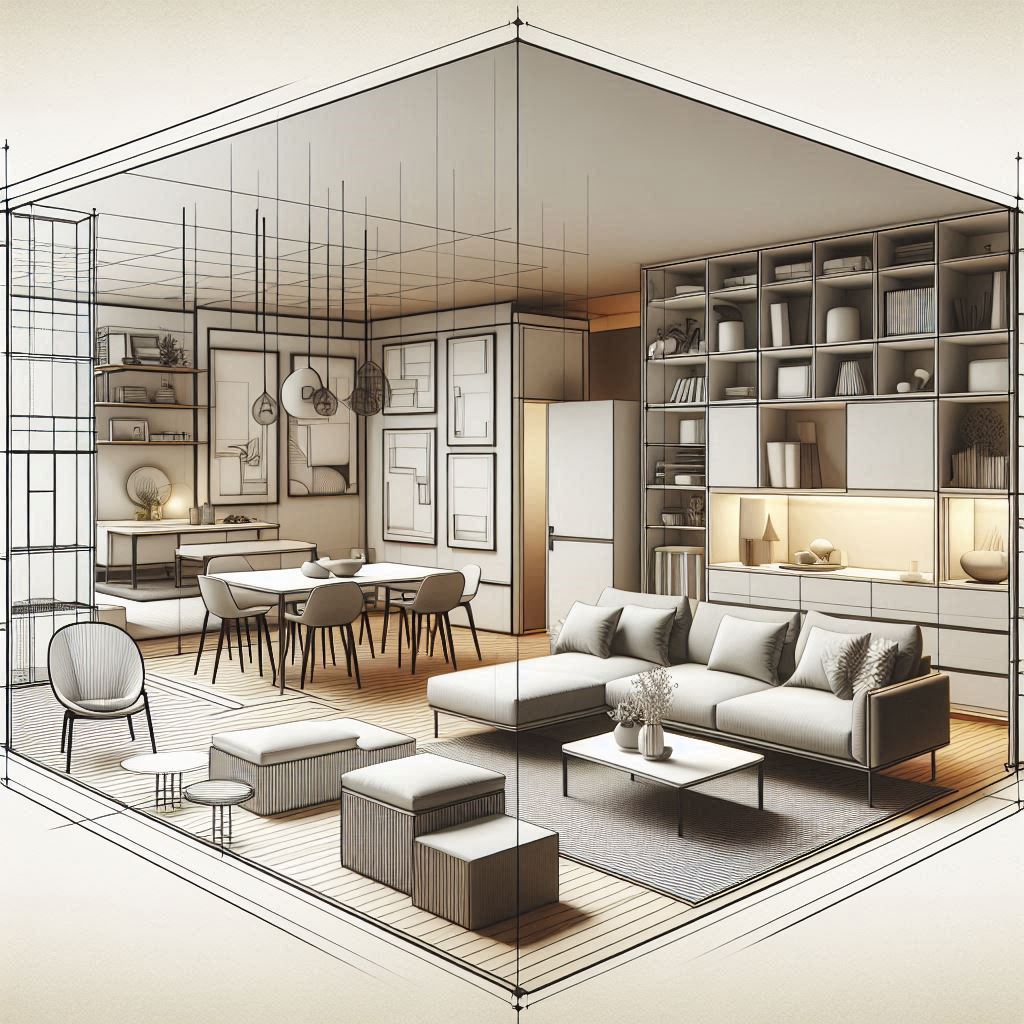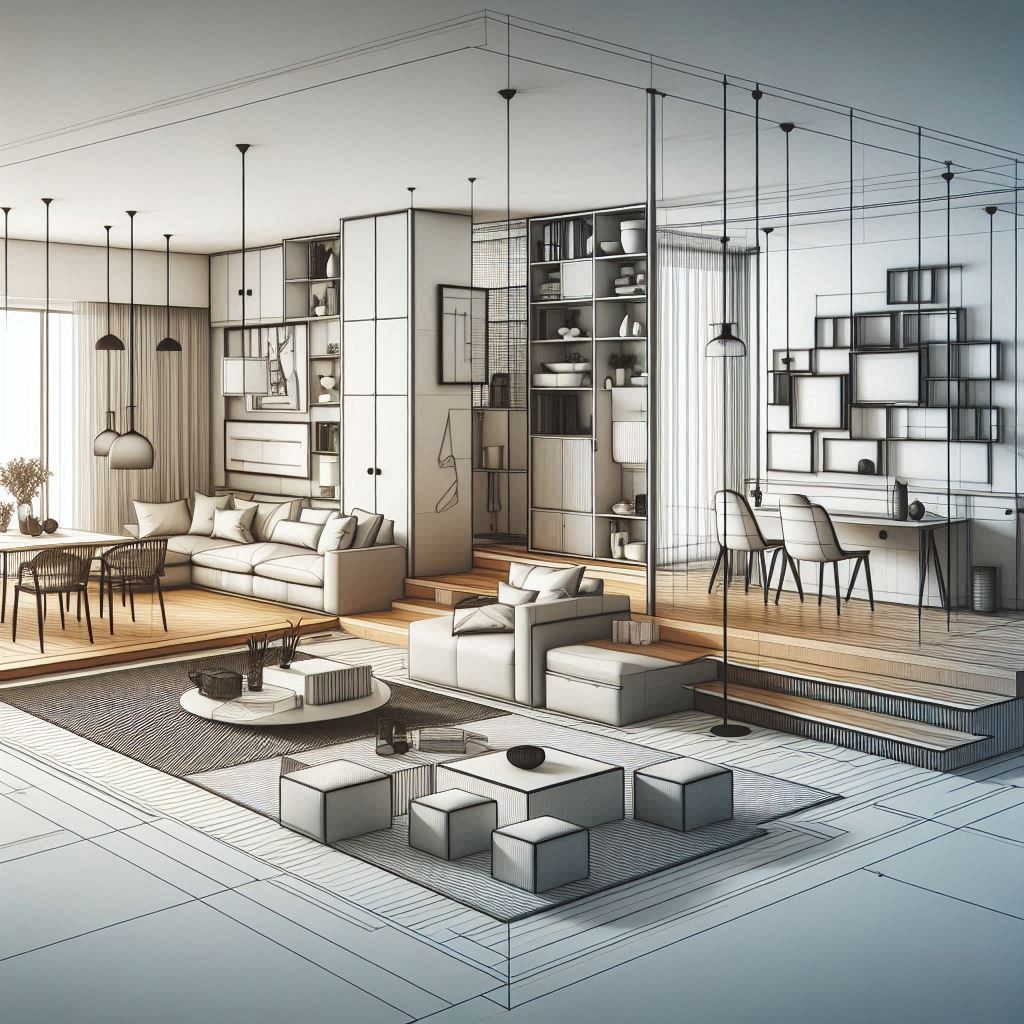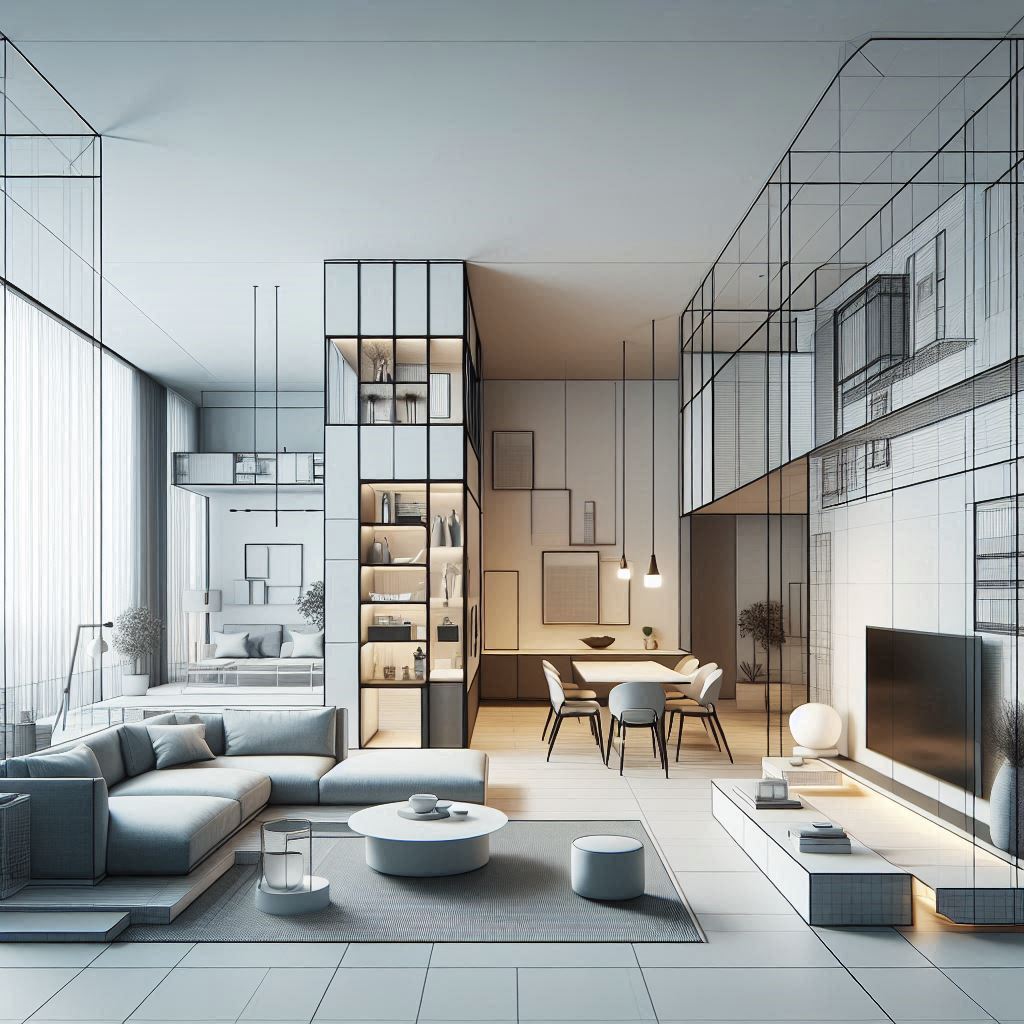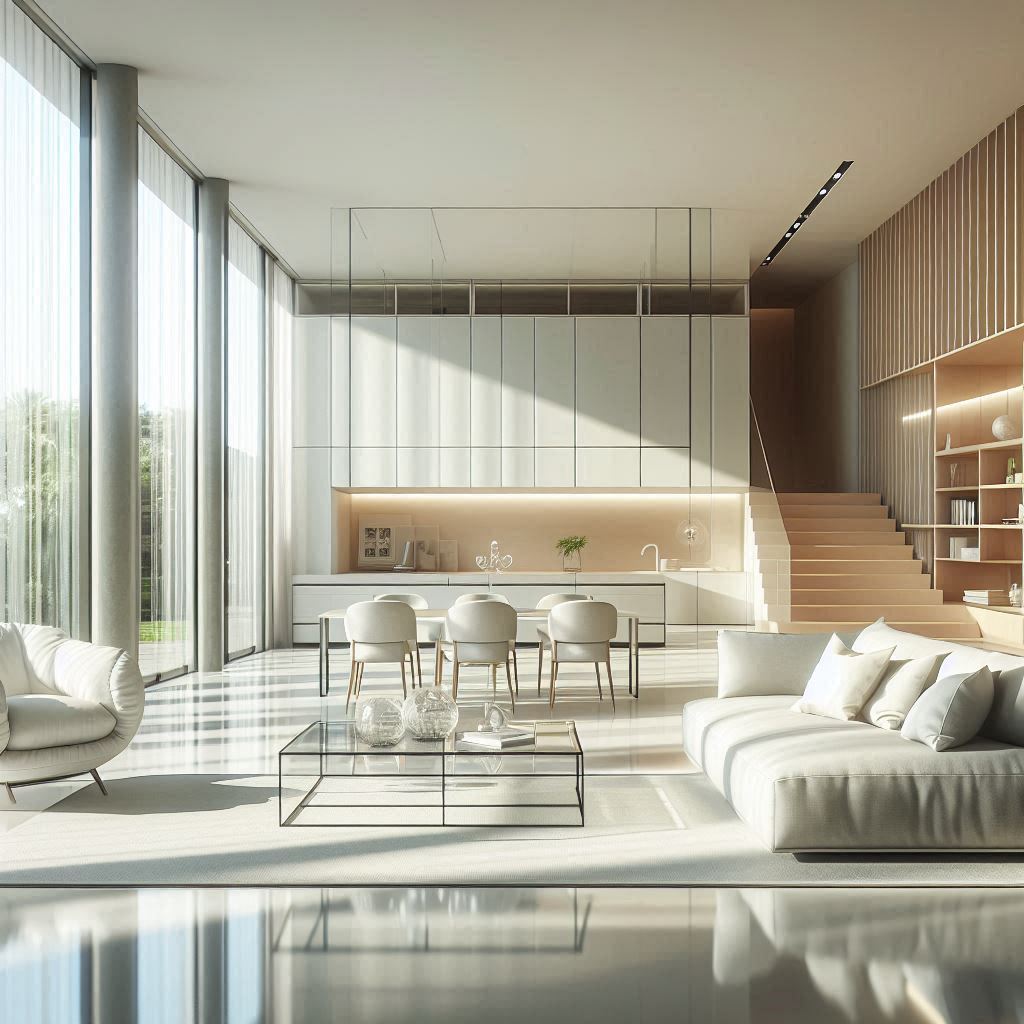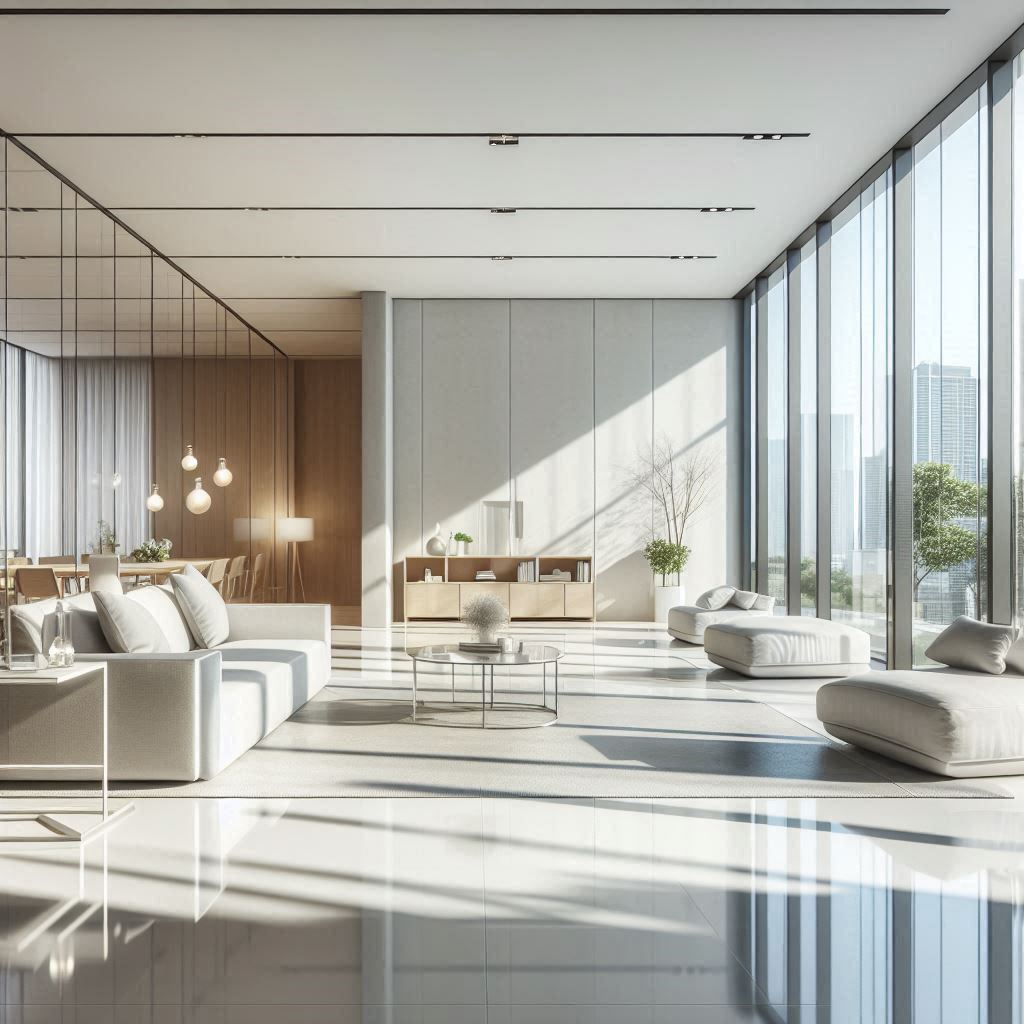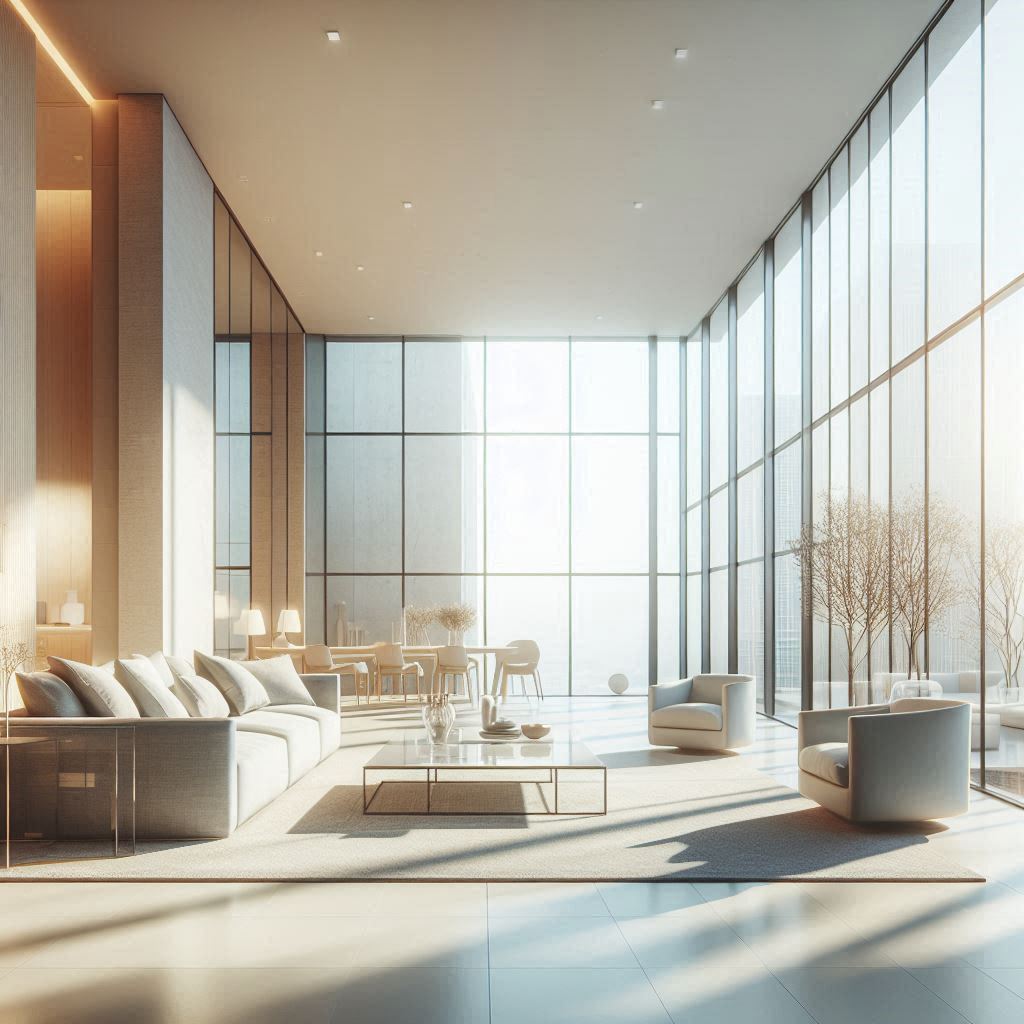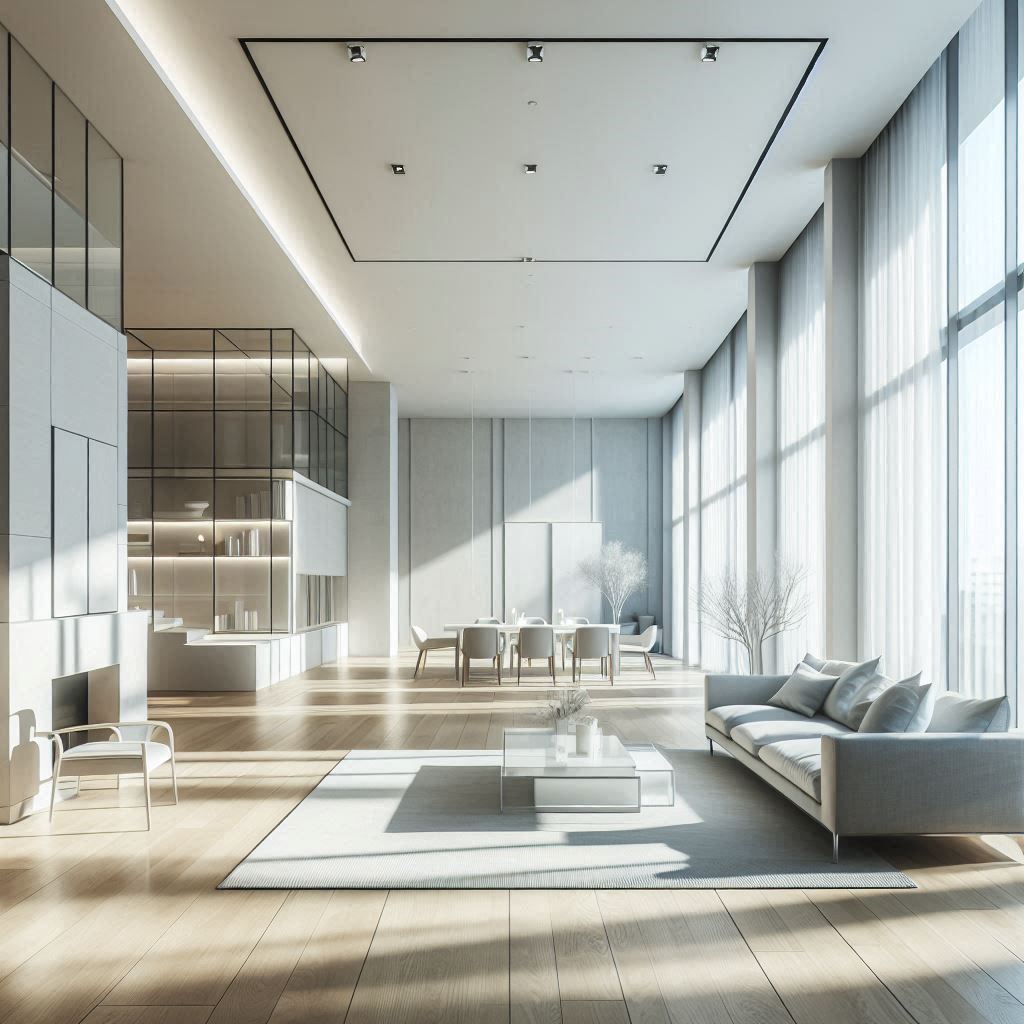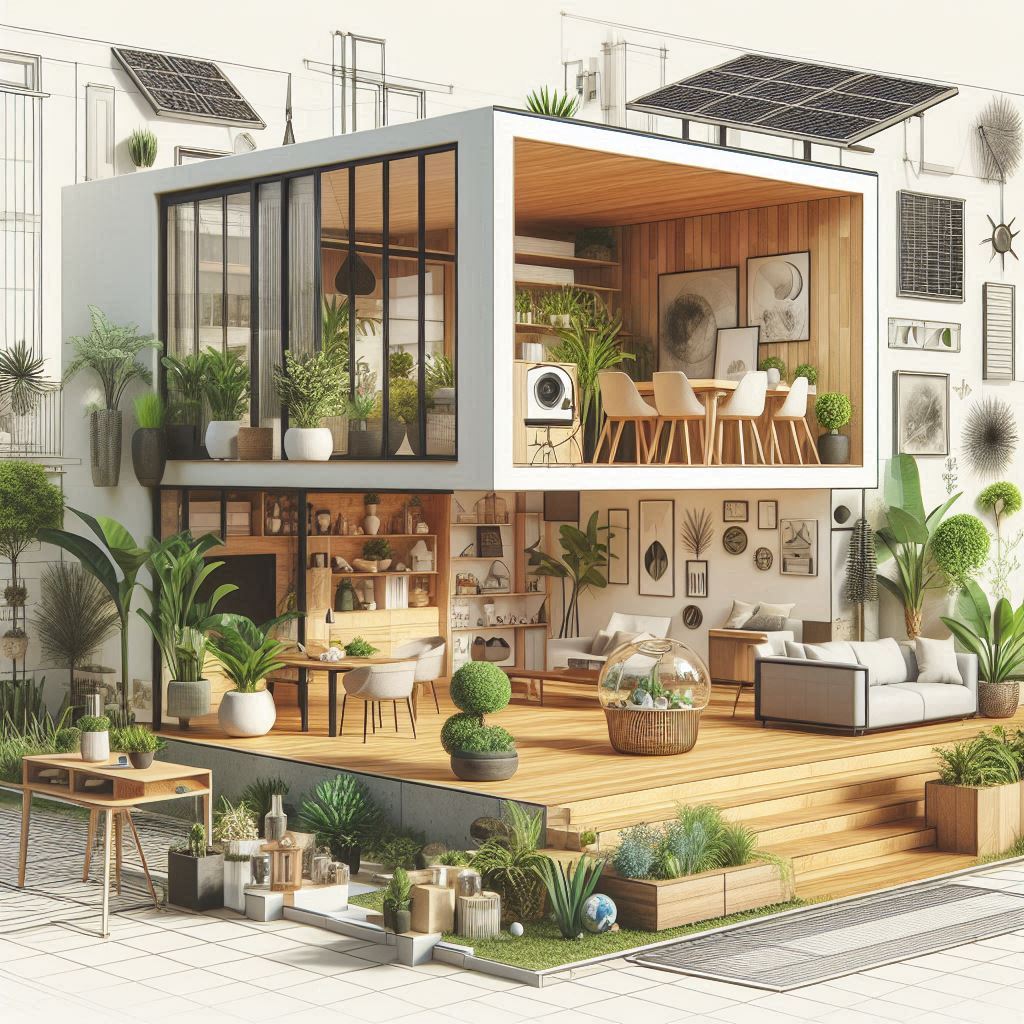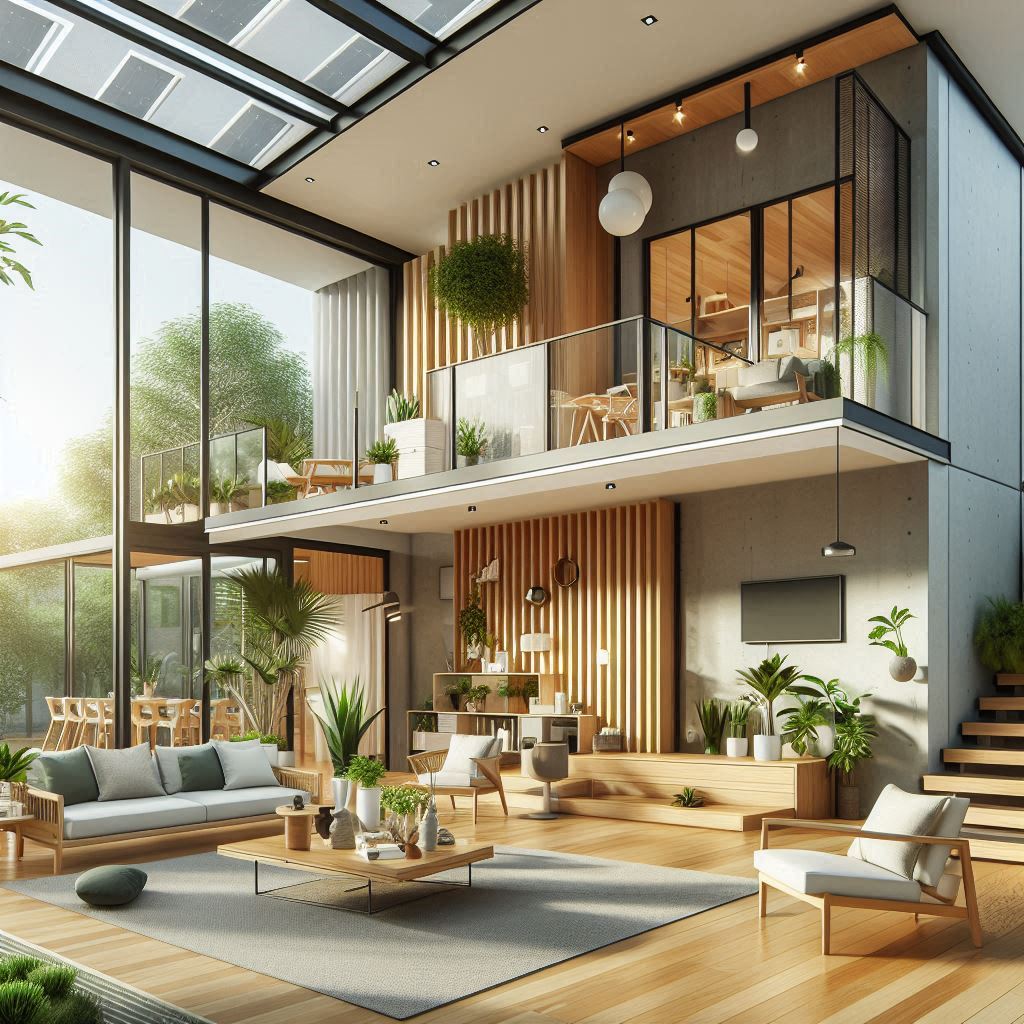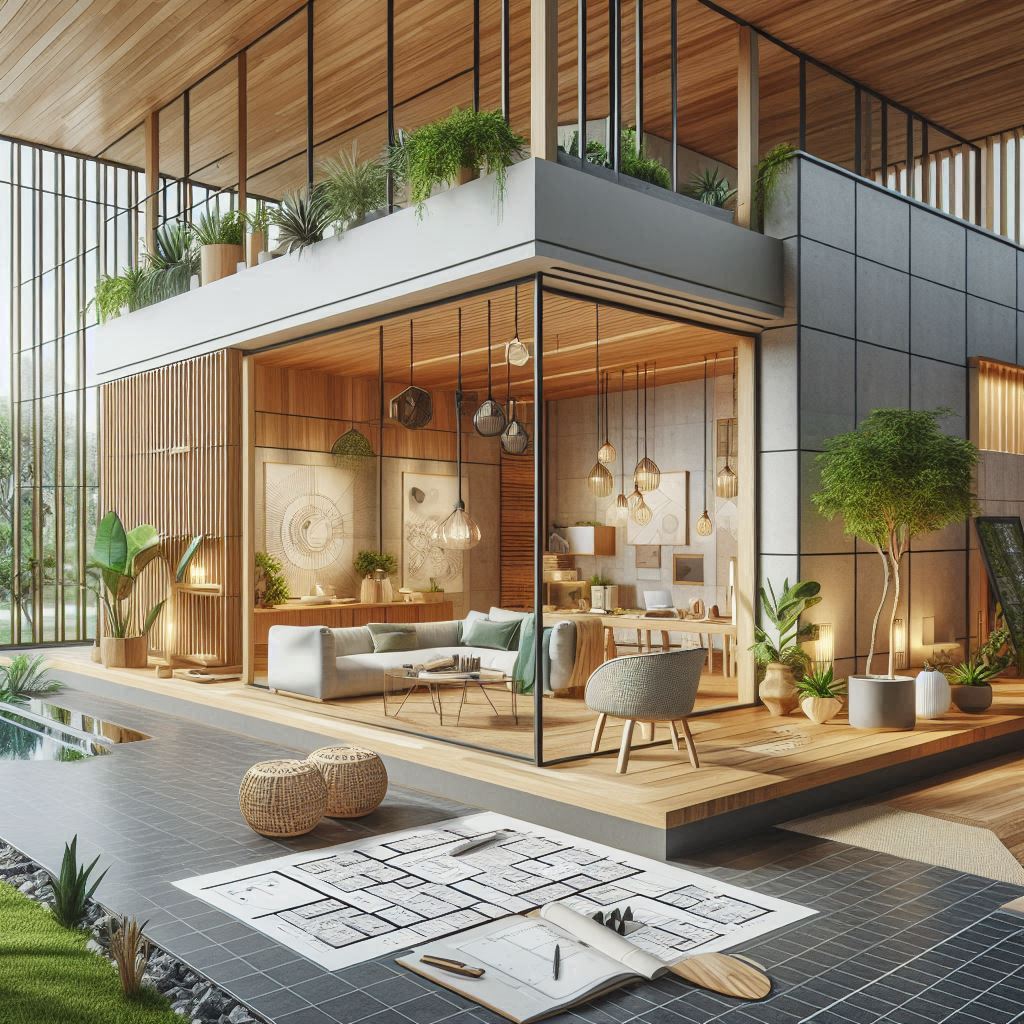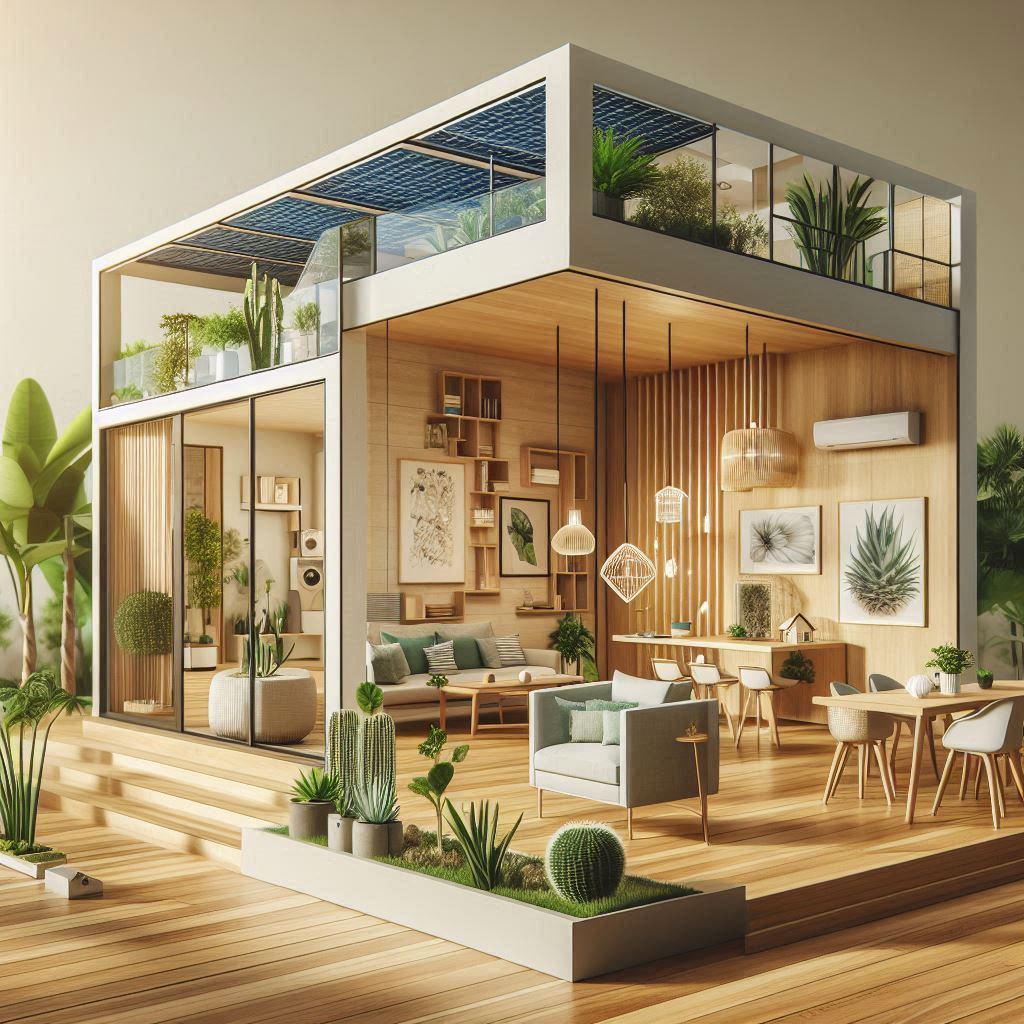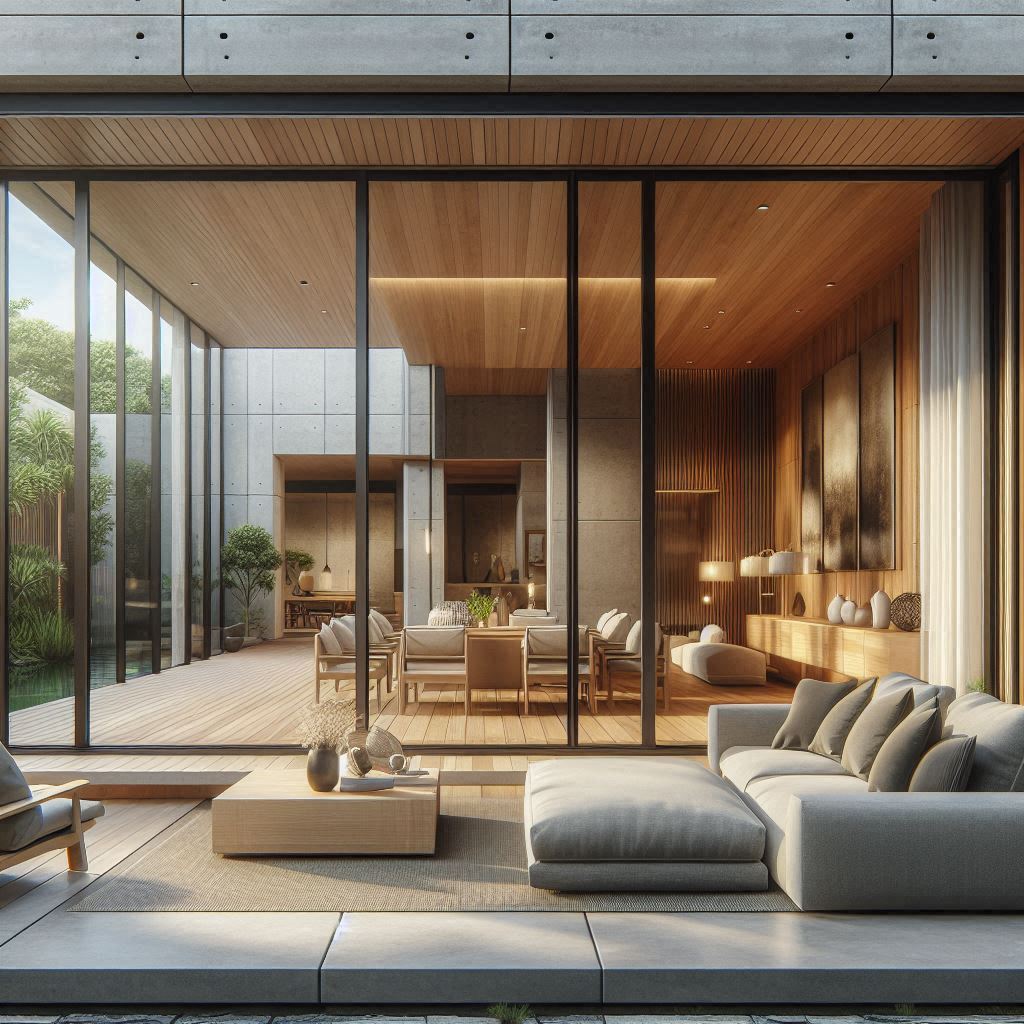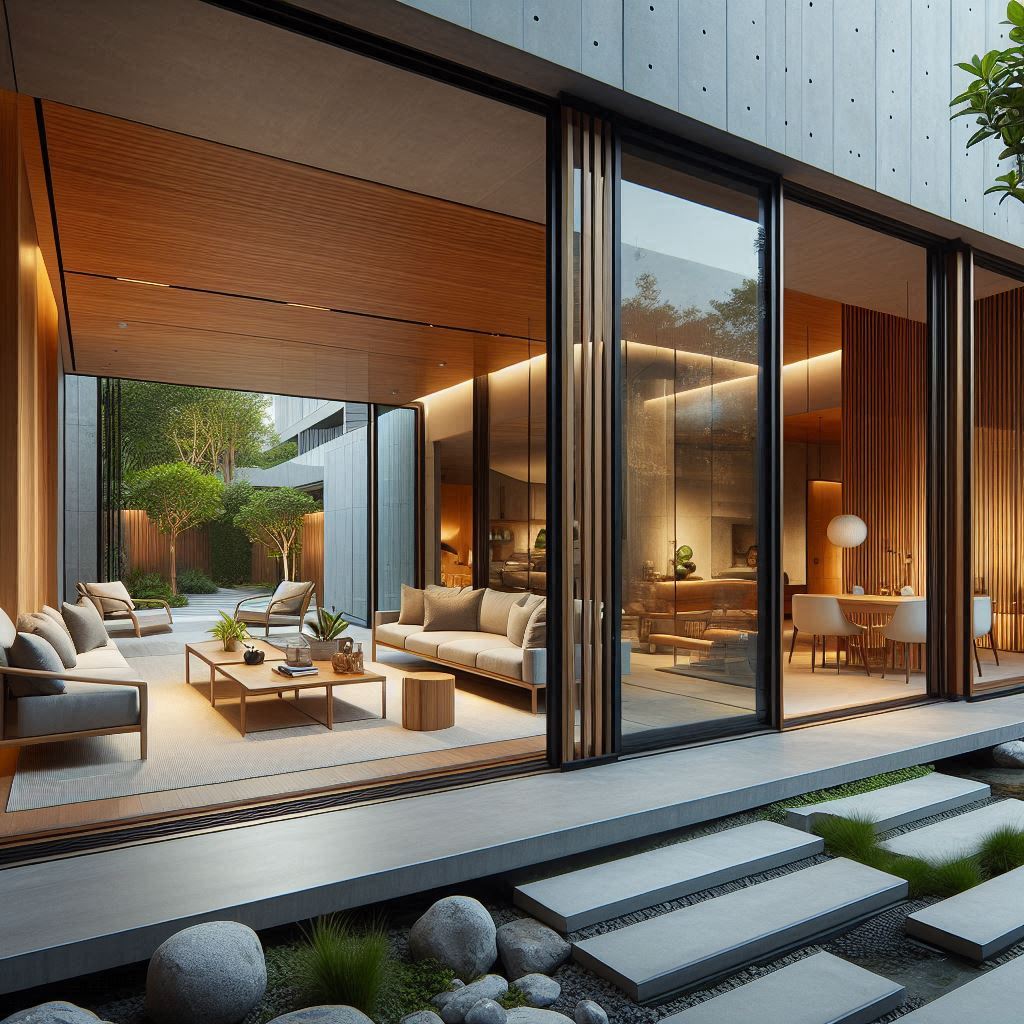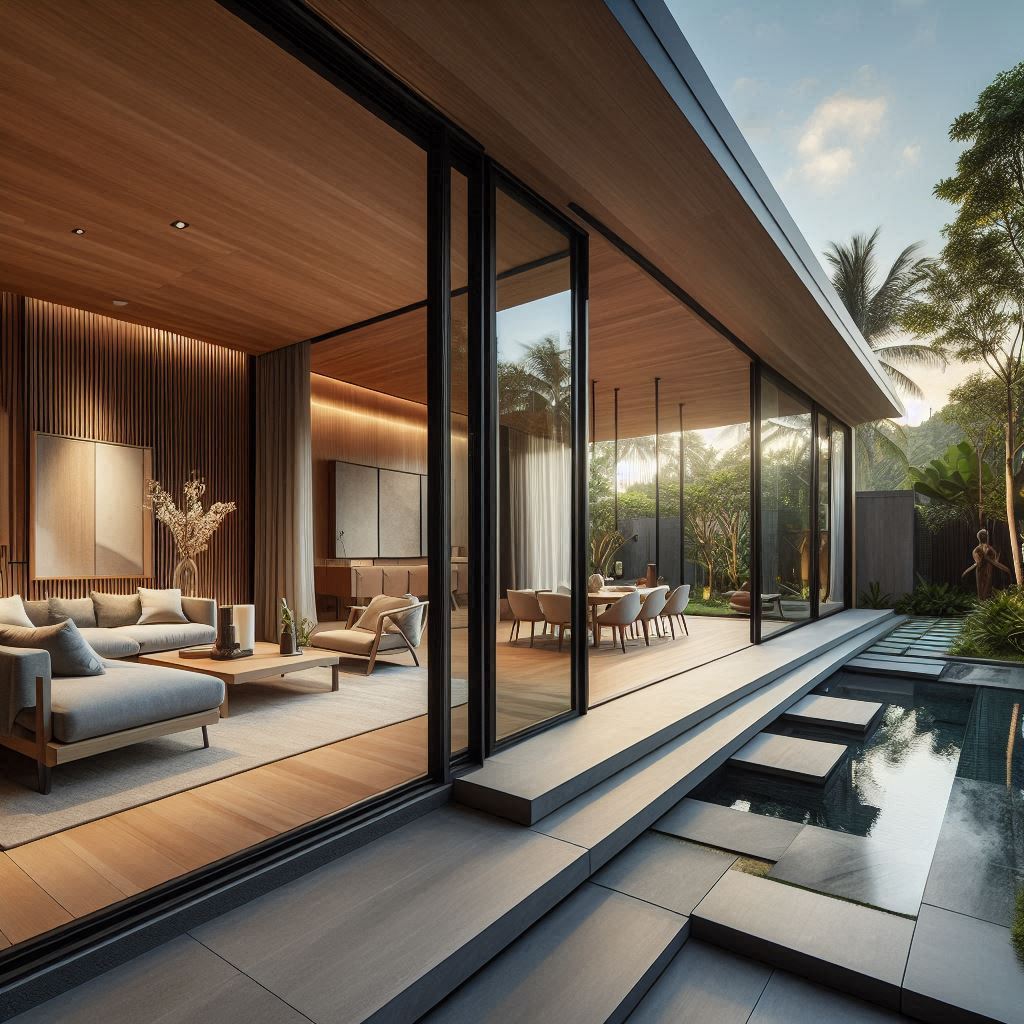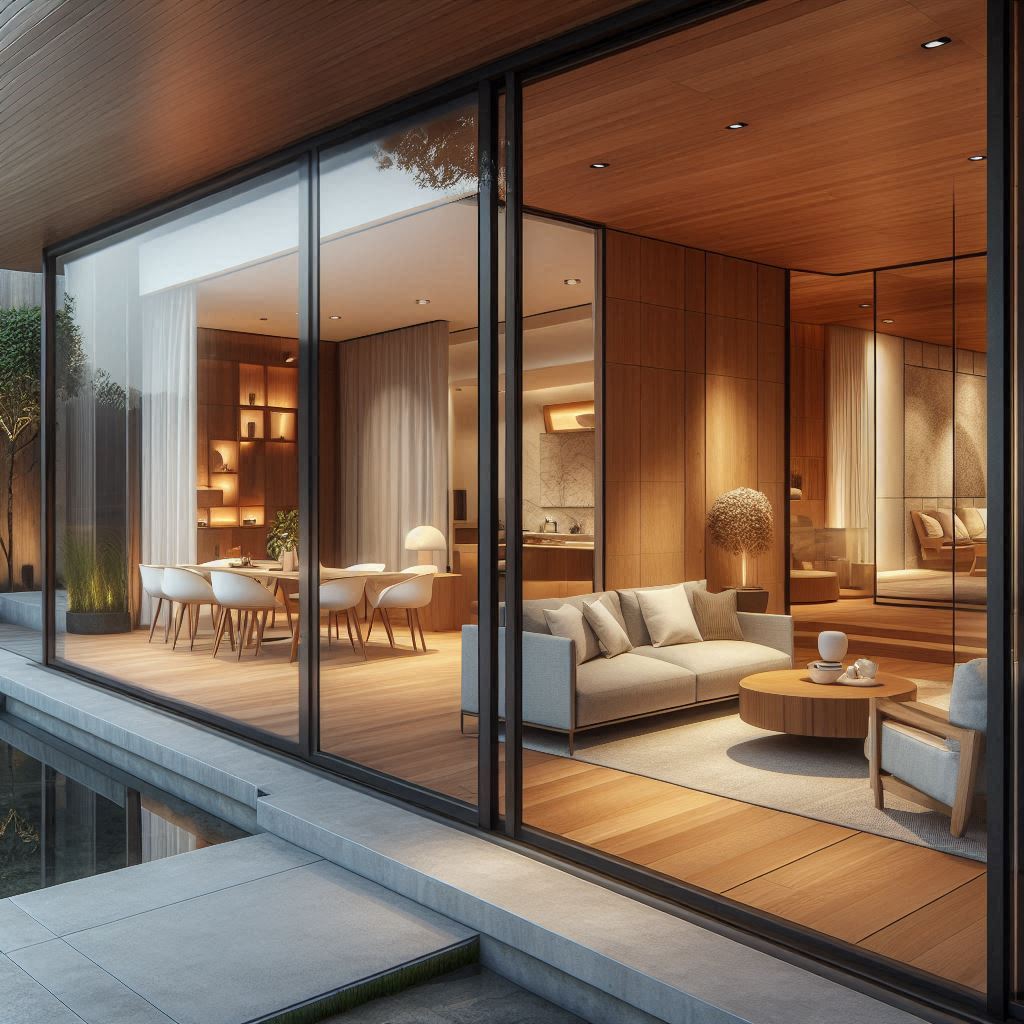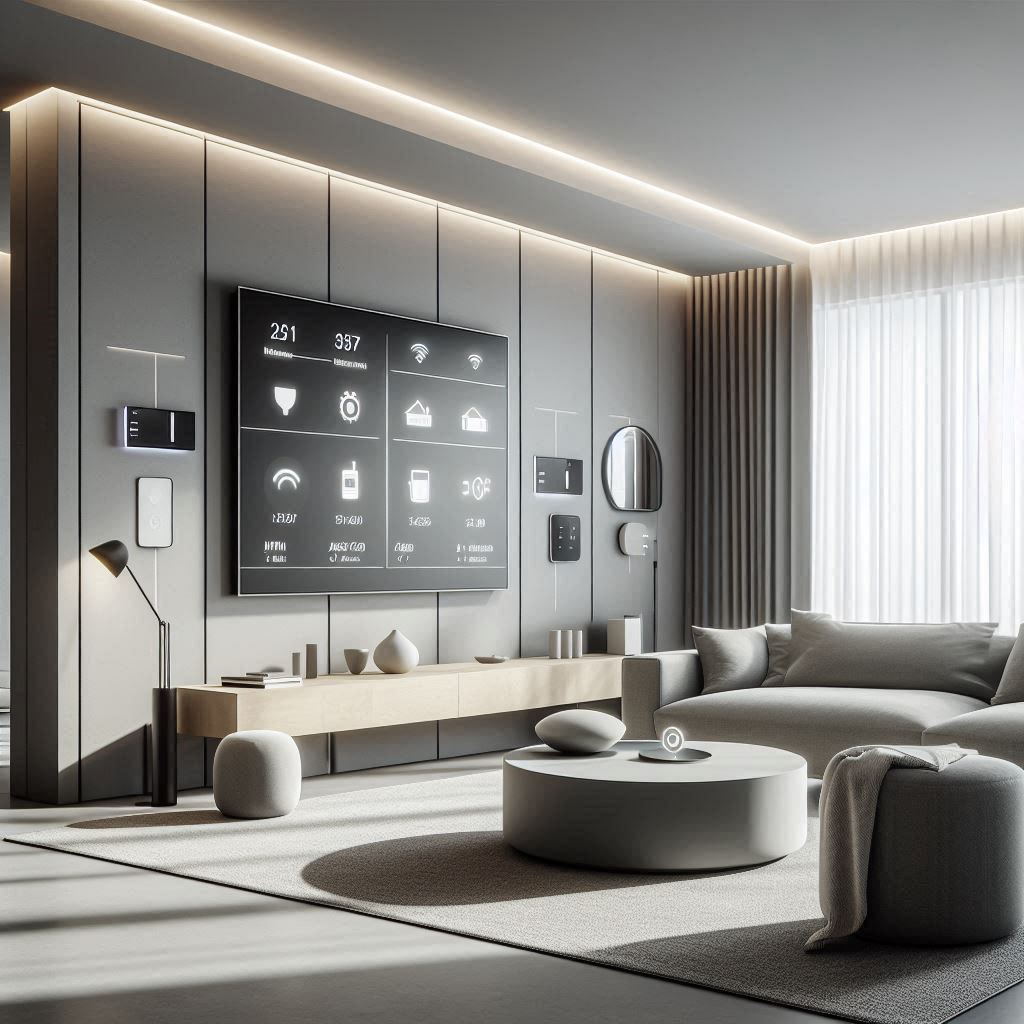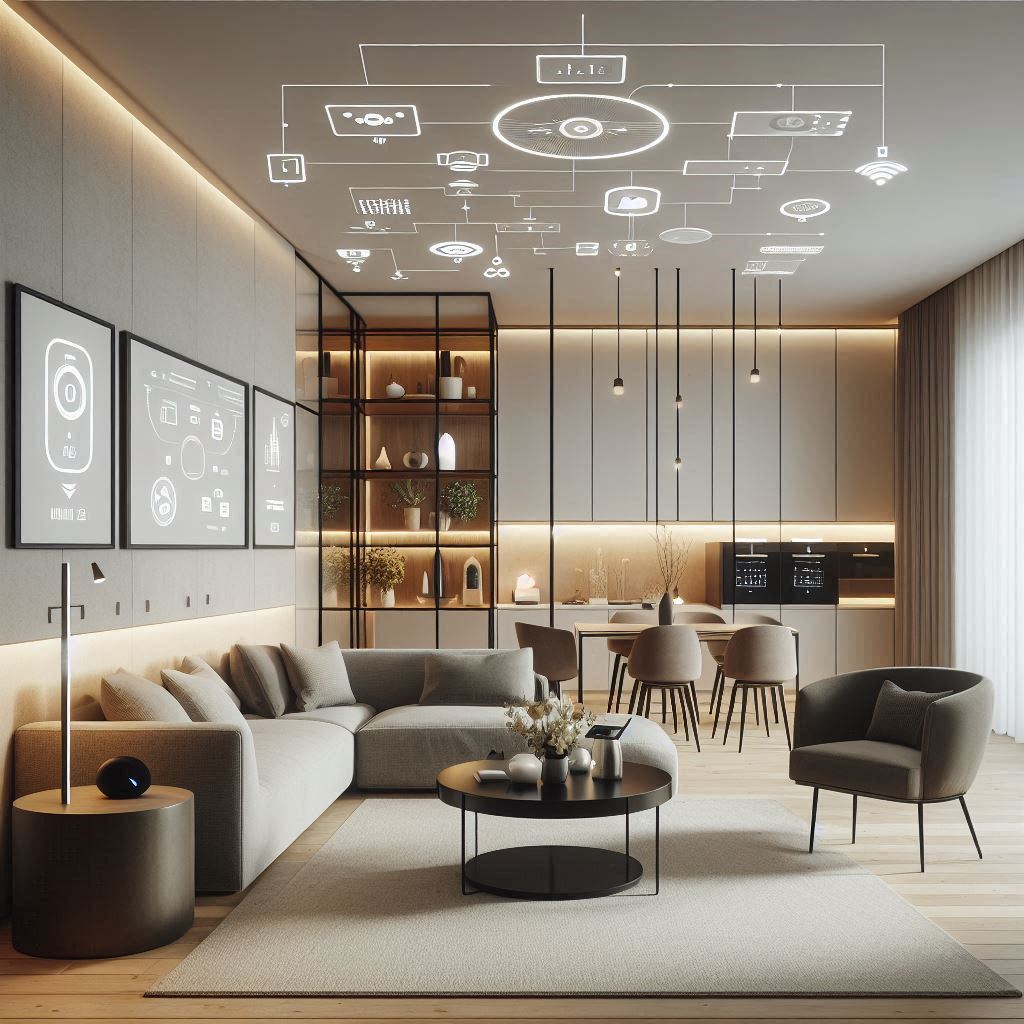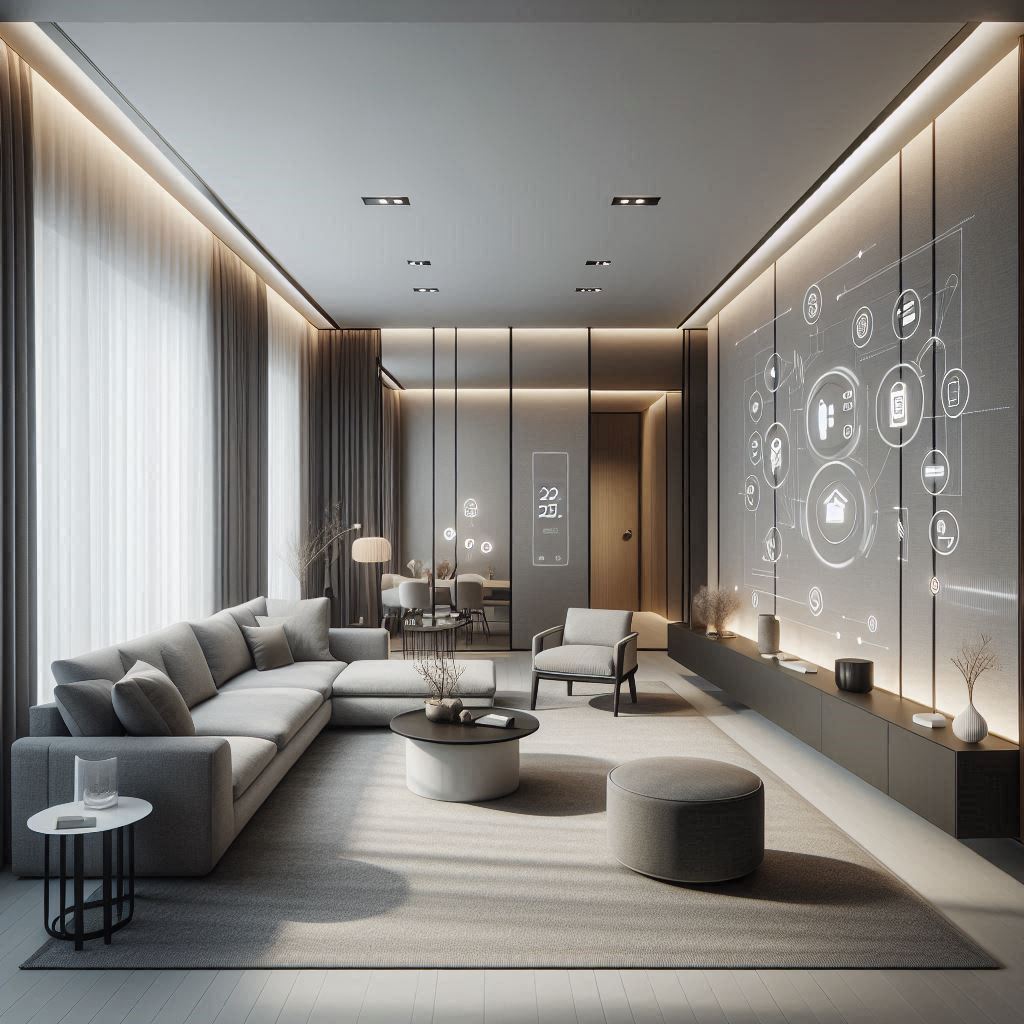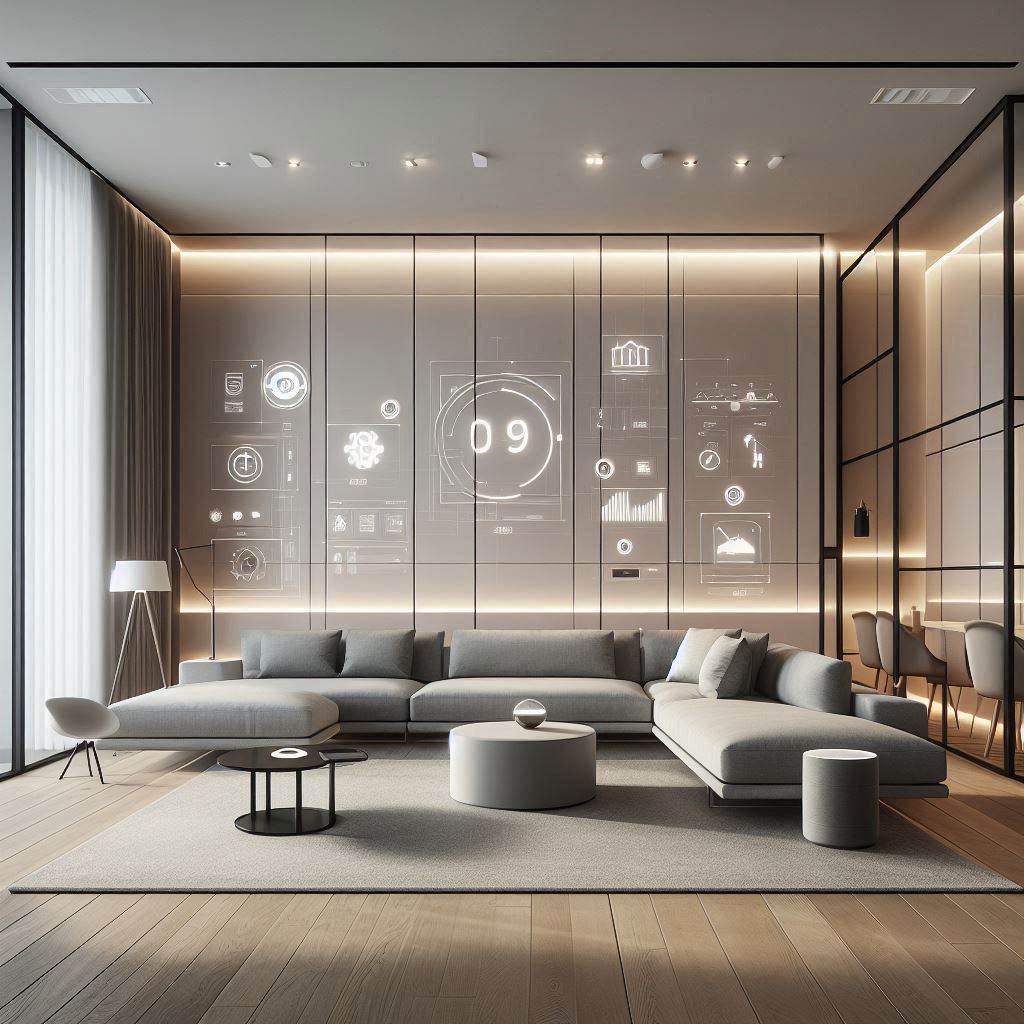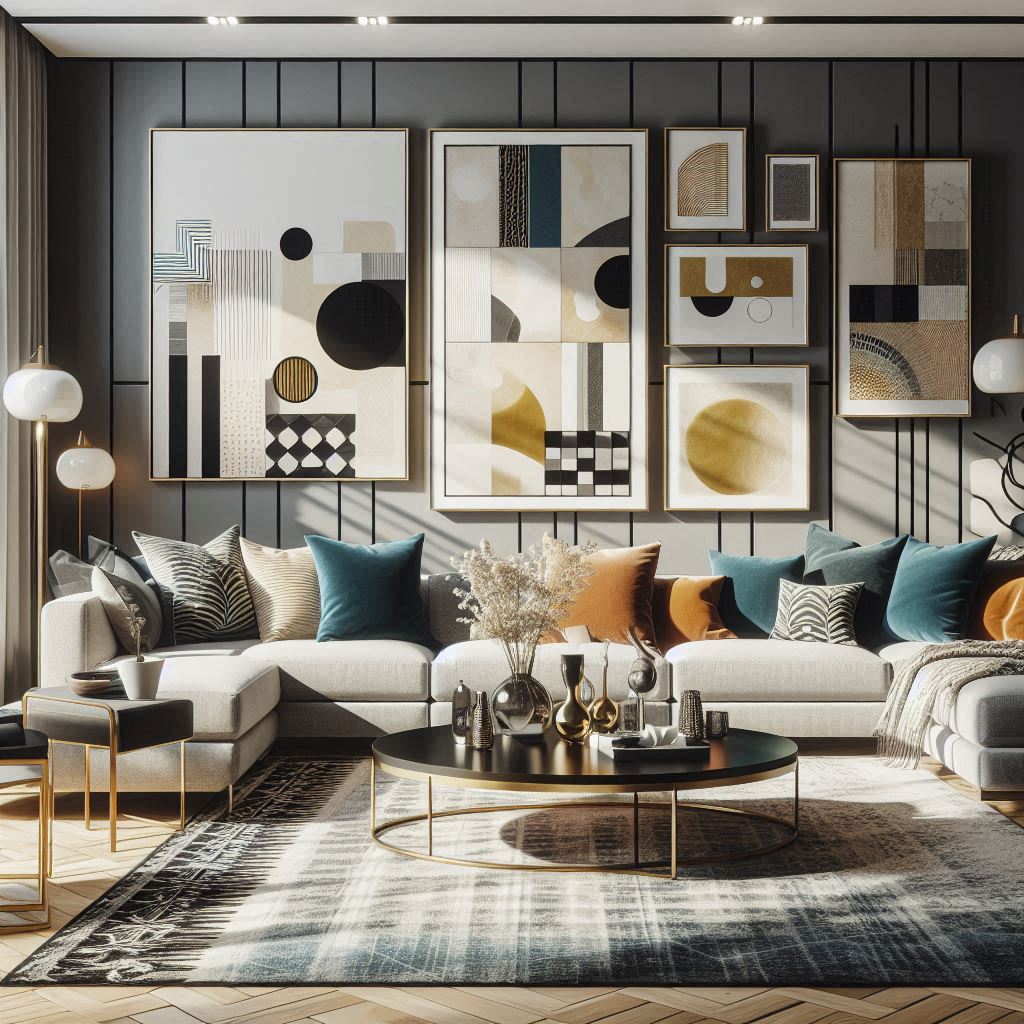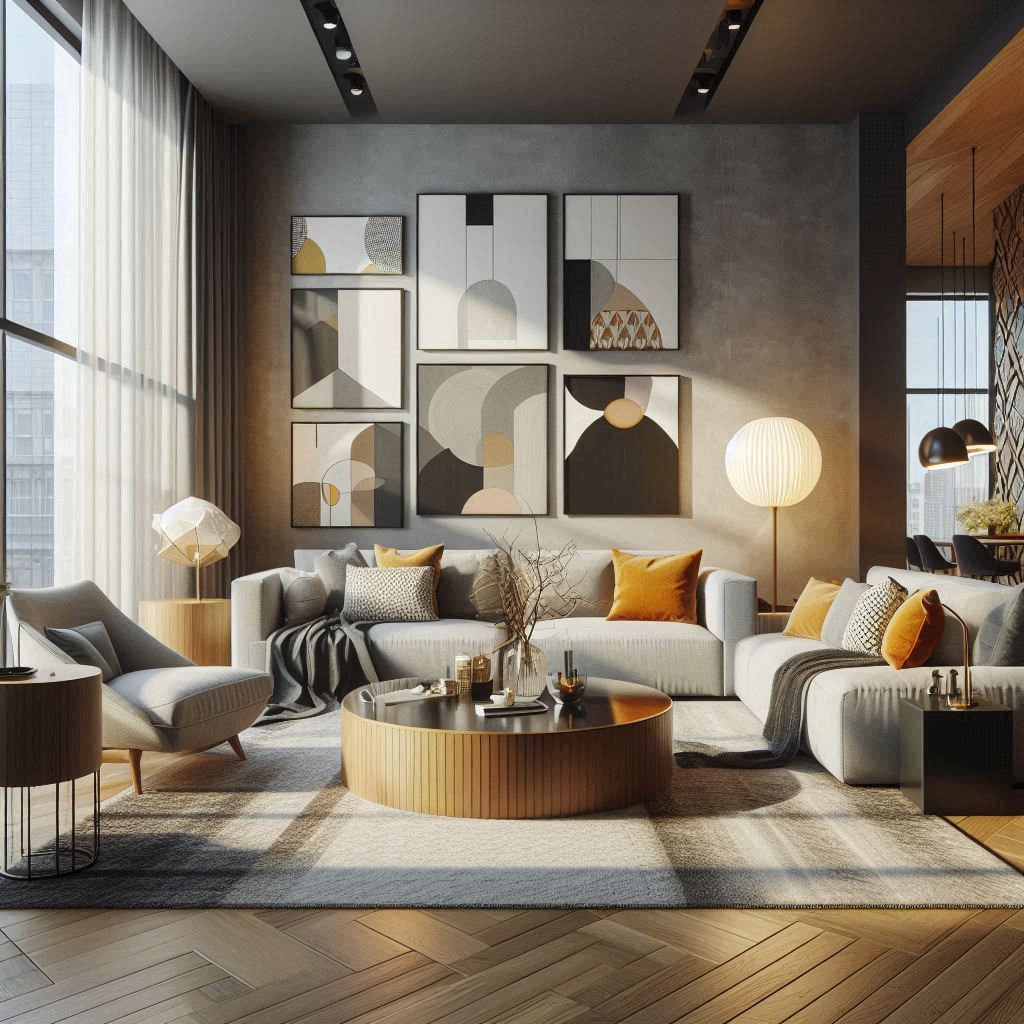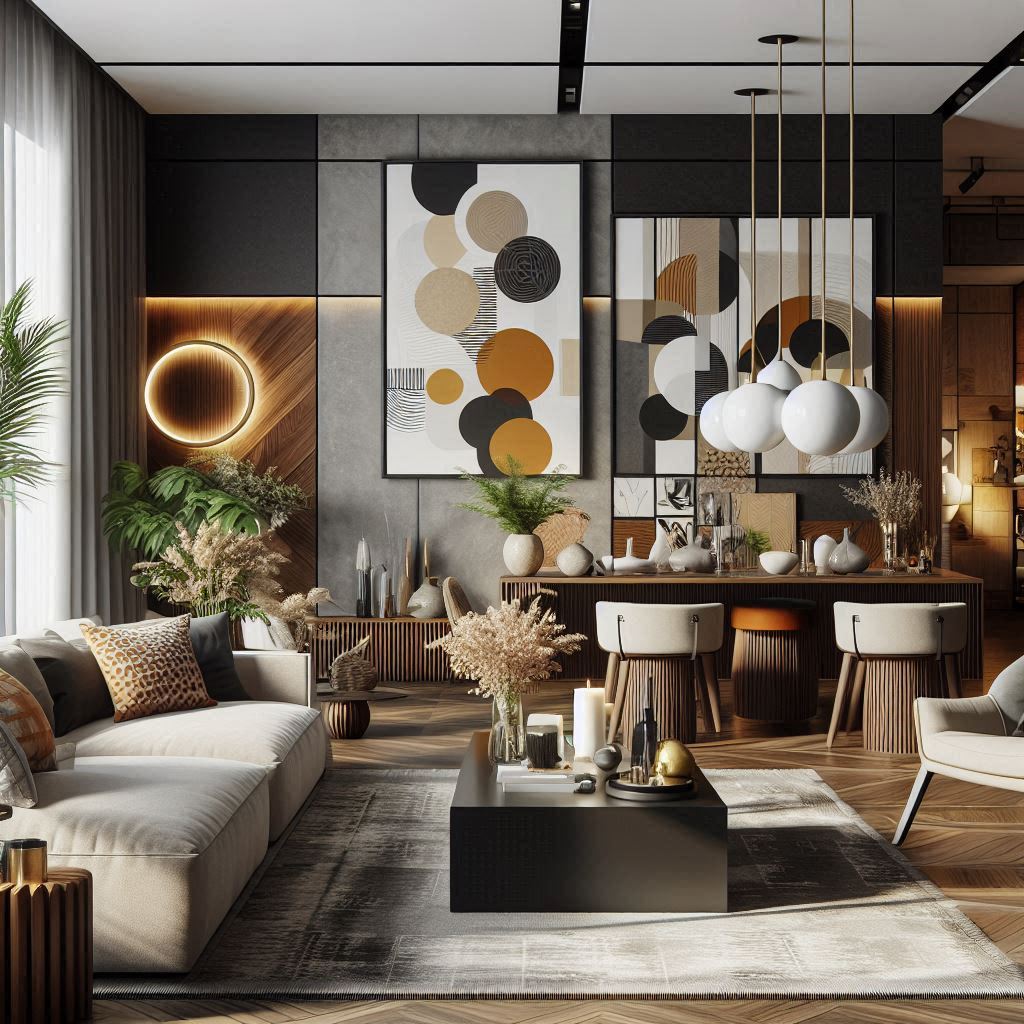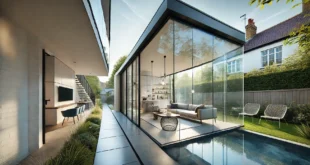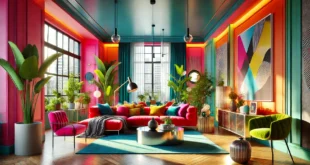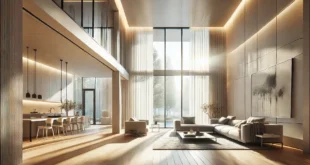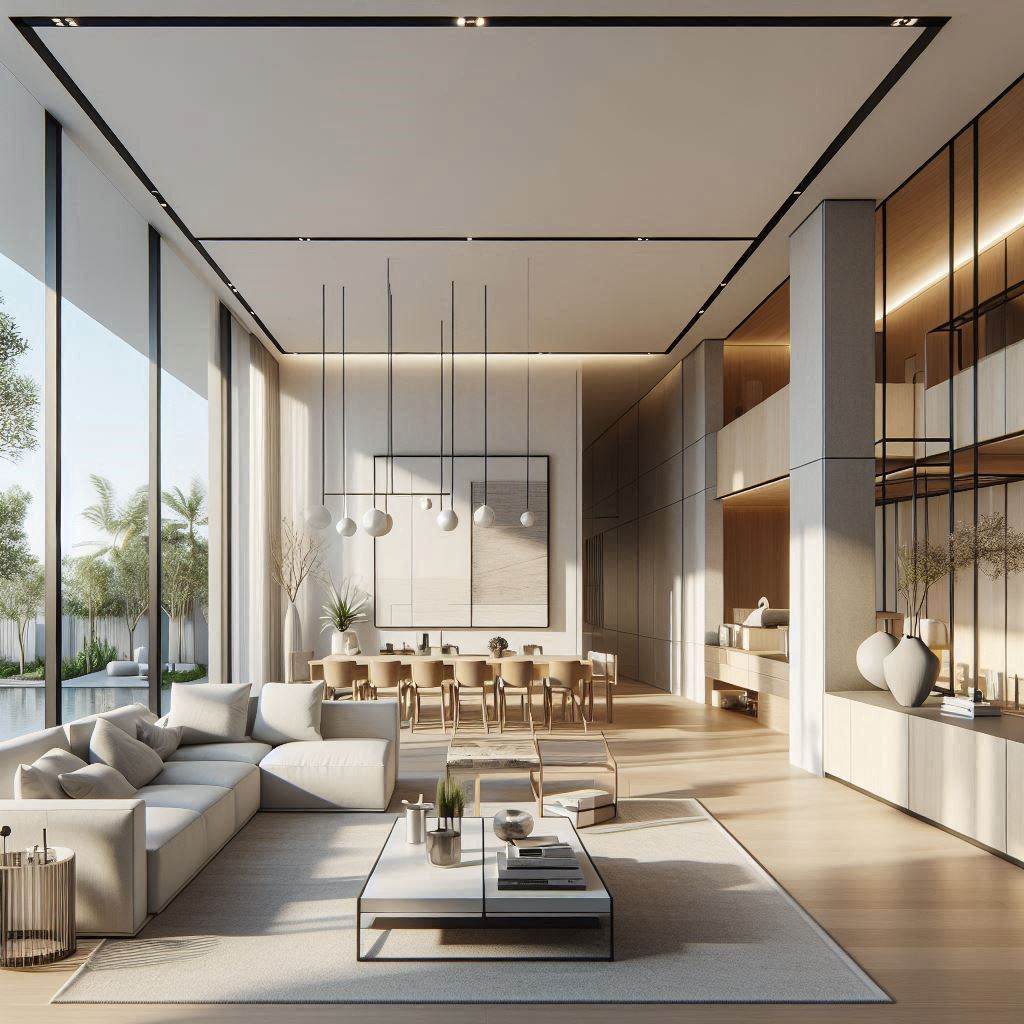 Welcome to the fascinating world of contemporary home design, where modern aesthetics, functionality, and innovation converge to create sophisticated and dynamic living spaces. As a professional home designer, I am thrilled to guide you through the endless possibilities of contemporary design, whether you’re looking to update a single room or embark on a full home transformation. Contemporary design is about staying in tune with the present, offering a blend of simplicity, elegance, and cutting-edge ideas that make any home feel fresh, stylish, and comfortable.
Welcome to the fascinating world of contemporary home design, where modern aesthetics, functionality, and innovation converge to create sophisticated and dynamic living spaces. As a professional home designer, I am thrilled to guide you through the endless possibilities of contemporary design, whether you’re looking to update a single room or embark on a full home transformation. Contemporary design is about staying in tune with the present, offering a blend of simplicity, elegance, and cutting-edge ideas that make any home feel fresh, stylish, and comfortable.
In today’s fast-paced world, contemporary home design offers a breath of fresh air with its clean lines, open spaces, and emphasis on natural light and sustainable materials. It’s a style that prioritizes both form and function, giving homeowners the opportunity to express their individuality while creating practical and welcoming environments. From sleek furniture to minimalist color palettes, contemporary design celebrates innovation and creativity. This article will provide you with the insights and inspiration needed to transform your home into a stunning contemporary masterpiece.
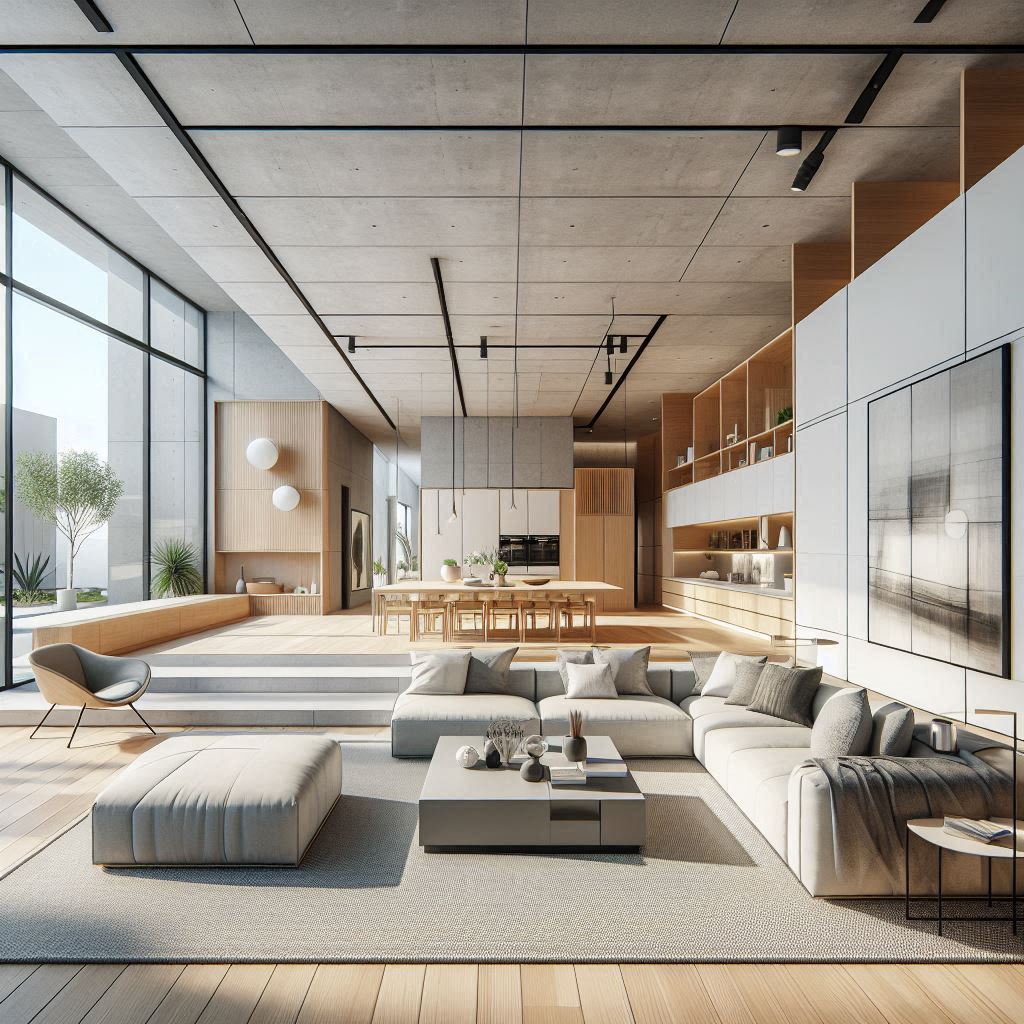 We understand that embarking on a home design project can feel overwhelming, especially with the myriad of design options available. That’s why we’re here to break down the essential elements of contemporary home design, helping you make informed decisions that will elevate your space and enhance your lifestyle. Whether you’re drawn to bold architectural features, luxurious materials, or a minimalist aesthetic, contemporary home design has something to offer everyone. Join us as we explore the key aspects of this exciting design style and discover how you can create a home that feels both modern and timeless.
We understand that embarking on a home design project can feel overwhelming, especially with the myriad of design options available. That’s why we’re here to break down the essential elements of contemporary home design, helping you make informed decisions that will elevate your space and enhance your lifestyle. Whether you’re drawn to bold architectural features, luxurious materials, or a minimalist aesthetic, contemporary home design has something to offer everyone. Join us as we explore the key aspects of this exciting design style and discover how you can create a home that feels both modern and timeless.
Introduction to Contemporary Home Design
Understanding Contemporary Design
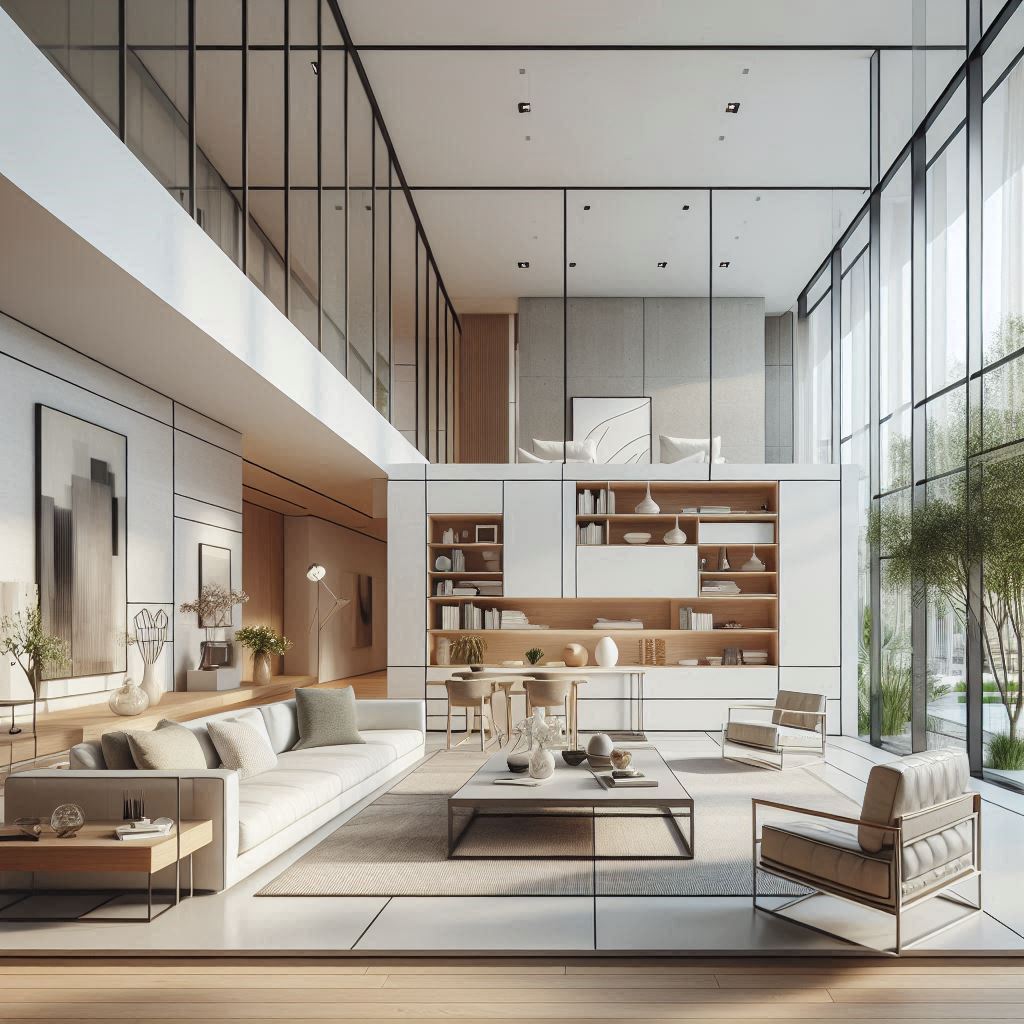 Contemporary home design refers to the current design trends, blending various styles and aesthetics from different eras. Unlike modern design, which is rooted in a specific period, contemporary design evolves with time, making it flexible and ever-changing. At its core, contemporary design focuses on simplicity, clean lines, and open spaces. It embraces natural materials, neutral color palettes, and a sense of harmony between form and function. Homes designed in a contemporary style often feature open floor plans, large windows, and a focus on natural light, creating a seamless connection between the indoors and outdoors.
Contemporary home design refers to the current design trends, blending various styles and aesthetics from different eras. Unlike modern design, which is rooted in a specific period, contemporary design evolves with time, making it flexible and ever-changing. At its core, contemporary design focuses on simplicity, clean lines, and open spaces. It embraces natural materials, neutral color palettes, and a sense of harmony between form and function. Homes designed in a contemporary style often feature open floor plans, large windows, and a focus on natural light, creating a seamless connection between the indoors and outdoors.
The Evolution of Contemporary Design
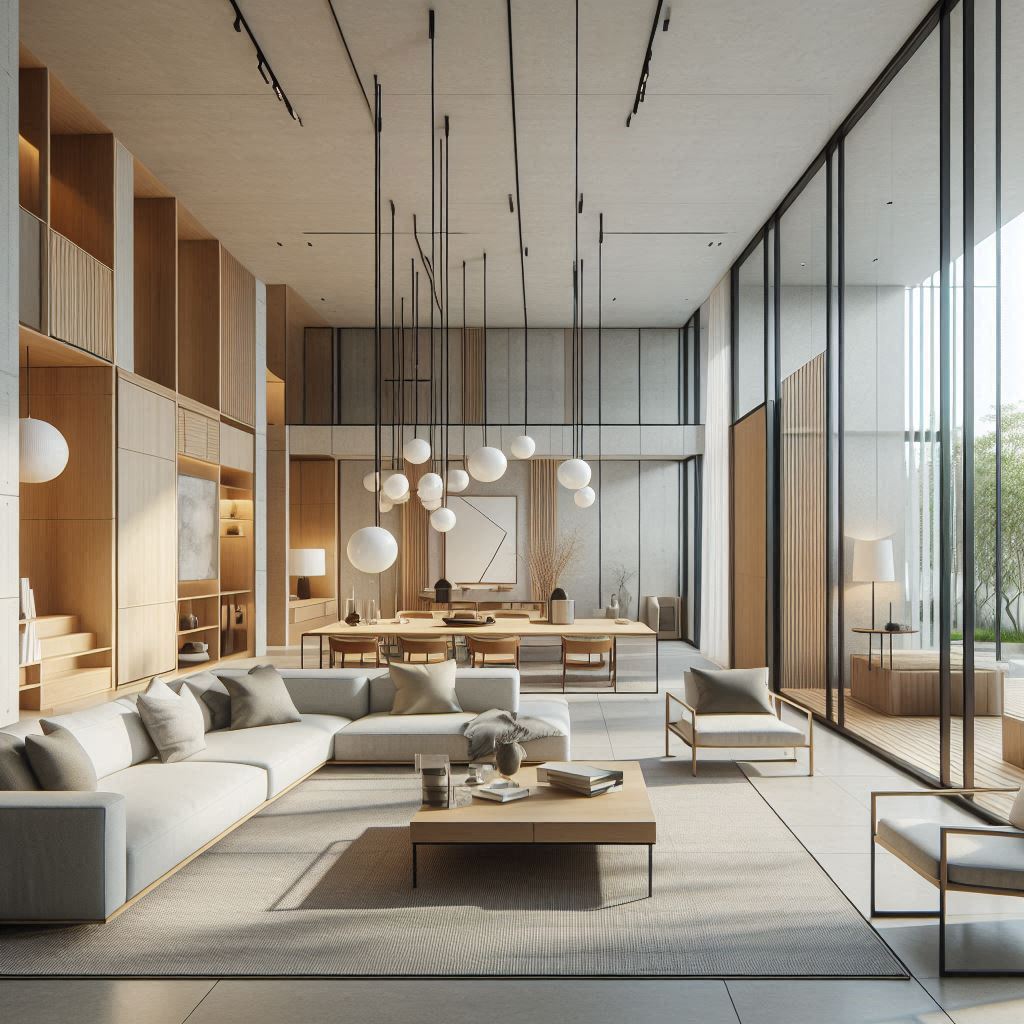 Contemporary design has evolved significantly over the past few decades, incorporating influences from various design movements, including modernism, minimalism, and industrial design. In the 21st century, contemporary home design has shifted towards sustainability, with an emphasis on eco-friendly materials, energy-efficient technologies, and a harmonious connection with nature. Today, contemporary homes are characterized by their sleek, uncluttered aesthetics, innovative use of materials, and smart home integration. The flexibility of contemporary design allows homeowners to experiment with different textures, finishes, and layouts, making it a versatile choice for a wide range of preferences.
Contemporary design has evolved significantly over the past few decades, incorporating influences from various design movements, including modernism, minimalism, and industrial design. In the 21st century, contemporary home design has shifted towards sustainability, with an emphasis on eco-friendly materials, energy-efficient technologies, and a harmonious connection with nature. Today, contemporary homes are characterized by their sleek, uncluttered aesthetics, innovative use of materials, and smart home integration. The flexibility of contemporary design allows homeowners to experiment with different textures, finishes, and layouts, making it a versatile choice for a wide range of preferences.
Key Characteristics of Contemporary Home Design
The hallmark of contemporary home design is its emphasis on clean lines and minimalism. Furniture and architectural features are sleek and streamlined, with an absence of ornate detailing. Neutral color schemes dominate contemporary spaces, often incorporating shades of white, gray, black, and beige. These neutral tones serve as a backdrop for bold accent colors or striking materials, such as metal, glass, and stone. Additionally, contemporary design prioritizes functionality, with open floor plans, multifunctional spaces, and integrated storage solutions. Natural light plays a crucial role, with large windows and glass doors bringing the outdoors inside.
Contemporary Design Materials
One of the defining features of contemporary home design is the use of innovative and sustainable materials. Wood, concrete, glass, and metal are commonly used to create sleek, modern finishes. Natural materials, such as stone and wood, add warmth and texture to contemporary interiors, while metals like steel and chrome provide a sleek, industrial edge. Glass is often used to enhance natural light and create a sense of openness. Sustainability is also a key consideration, with many contemporary homes incorporating eco-friendly materials, such as reclaimed wood, bamboo, and recycled metals, to reduce their environmental impact.
Contemporary Home Layouts
Contemporary home design is known for its open floor plans and seamless flow between spaces. In a contemporary home, walls are often removed to create larger, multifunctional living areas that encourage interaction and movement. This layout promotes a sense of spaciousness and flexibility, allowing homeowners to adapt their spaces to their needs. Additionally, contemporary homes often feature high ceilings and large windows that flood the interior with natural light. The connection between indoor and outdoor spaces is also a key element of contemporary design, with outdoor living areas, terraces, and gardens being integrated into the overall layout.
Contemporary Color Palettes
The color palette in contemporary home design is typically neutral, with shades of white, gray, beige, and black providing a clean and sophisticated backdrop. However, contemporary design also allows for bold accents of color, such as deep blues, rich greens, or vibrant reds, to add personality and visual interest to the space. These accent colors are often introduced through furniture, artwork, or decorative elements. The use of natural materials, such as wood and stone, also adds warmth and texture to the neutral color palette, creating a balanced and harmonious environment.
Furniture in Contemporary Home Design
Furniture in contemporary home design is characterized by its clean lines, sleek forms, and minimalist approach. Pieces are often functional, with an emphasis on comfort and practicality. Contemporary furniture is typically made from materials such as wood, metal, and glass, with a focus on craftsmanship and quality. Modular furniture and multi-functional pieces are common in contemporary homes, allowing homeowners to maximize their space without sacrificing style. Additionally, contemporary furniture often features simple, geometric shapes, with a focus on balance and proportion. Whether it’s a statement sofa or a minimalist dining table, contemporary furniture adds sophistication and elegance to any space.
Exploring Contemporary Home Design Ideas
Open Concept Living
One of the most defining features of contemporary home design is the open concept layout, where spaces flow seamlessly from one area to the next. The living room, kitchen, and dining areas are often combined into a single, expansive space that encourages interaction and flexibility. This design promotes a sense of openness and connectivity, making the home feel larger and more dynamic. In open concept living, furniture placement becomes crucial, as it helps define different zones within the space. Area rugs, lighting, and furniture arrangements can be used to create distinct areas while maintaining a cohesive and fluid design.
Minimalist Design Elements
Minimalism is a key component of contemporary home design, emphasizing simplicity, clean lines, and uncluttered spaces. In minimalist contemporary homes, less is more, with a focus on quality over quantity. Furniture and decor are carefully curated, with an emphasis on function and aesthetics. Clutter is minimized, and every element in the room serves a purpose. The minimalist approach allows for a more serene and calming environment, where the focus is on the architecture, materials, and natural light. Minimalist contemporary design is perfect for those who appreciate a clean and streamlined aesthetic that is both timeless and elegant.
Sustainable and Eco-Friendly Design
As sustainability becomes increasingly important in home design, contemporary homes are incorporating more eco-friendly materials and technologies. Sustainable materials, such as reclaimed wood, bamboo, and recycled metals, are used to reduce the environmental impact of the home. Additionally, energy-efficient technologies, such as solar panels, LED lighting, and smart home systems, are integrated into contemporary homes to promote sustainability and reduce energy consumption. Sustainable contemporary design not only benefits the environment but also enhances the overall comfort and efficiency of the home, making it a smart and responsible choice for homeowners.
Smart Home Integration
Technology plays a significant role in contemporary home design, with smart home systems being seamlessly integrated into the design. From voice-activated lighting and temperature controls to smart security systems and automated window treatments, contemporary homes are designed to be both functional and technologically advanced. These smart home features not only enhance convenience and efficiency but also contribute to the sleek and modern aesthetic of contemporary design. Whether it’s a high-tech kitchen or a state-of-the-art entertainment system, smart home integration adds a layer of sophistication and innovation to contemporary living.
Indoor-Outdoor Connection
One of the most appealing aspects of contemporary home design is its focus on creating a strong connection between indoor and outdoor spaces. Large windows, sliding glass doors, and open terraces are used to blur the lines between the interior and exterior, allowing natural light to flood the home and providing stunning views of the surrounding landscape. Outdoor living spaces, such as patios, decks, and gardens, are often integrated into the overall design, creating a seamless transition between the indoors and outdoors. This connection with nature not only enhances the beauty of the home but also promotes a sense of tranquility and well-being.
Art and Decorative Elements in Contemporary Design
In contemporary home design, art and decorative elements play a crucial role in adding personality and character to the space. Bold, abstract artwork, sculptural pieces, and modern lighting fixtures are often used to create visual interest and serve as focal points within the room. The use of statement art pieces allows homeowners to express their individual style and taste while complementing the clean lines and neutral color palette of contemporary design. Additionally, decorative elements, such as vases, rugs, and throw pillows, can be used to introduce color, texture, and warmth into the space, creating a balanced and harmonious environment.
Lighting in Contemporary Home Design
Lighting is a key element in contemporary home design, as it not only serves a functional purpose but also enhances the overall ambiance and aesthetic of the space. In contemporary homes, natural light is maximized through the use of large windows and skylights, while artificial lighting is used to create a warm and inviting atmosphere. Modern lighting fixtures, such as pendant lights, floor lamps, and recessed lighting, are often sleek and minimal in design, complementing the clean lines of the contemporary aesthetic. Additionally, accent lighting is used to highlight architectural features or artwork, adding depth and dimension to the space.
The Advantages of Contemporary Home Design
Timeless Appeal
One of the main advantages of contemporary home design is its timeless appeal. Unlike other design styles that may go in and out of fashion, contemporary design is constantly evolving, making it adaptable to current trends while maintaining its core principles of simplicity and functionality. The clean lines, neutral color palette, and focus on natural materials ensure that contemporary homes remain stylish and relevant for years to come. Homeowners can easily update their contemporary spaces with new furnishings, artwork, or technology without having to overhaul the entire design, making it a versatile and enduring choice.
Functionality and Flexibility
Contemporary home design prioritizes functionality and flexibility, making it an ideal choice for modern living. The open floor plans and multifunctional spaces allow homeowners to adapt their living environments to their needs, whether it’s creating a home office, an entertainment area, or a cozy reading nook. Contemporary homes are designed to accommodate changing lifestyles, with smart storage solutions, modular furniture, and integrated technology enhancing the overall functionality of the space. This flexibility makes contemporary design perfect for families, professionals, and anyone looking for a home that can evolve with them over time.
Natural Light and Space
Natural light is a key element of contemporary home design, with large windows, skylights, and open floor plans allowing sunlight to flood the interior spaces. This abundance of natural light creates a sense of openness and spaciousness, making contemporary homes feel airy and inviting. The use of glass and other transparent materials enhances the flow of light, while open-concept layouts allow it to move freely throughout the home. The emphasis on light and space not only makes contemporary homes more visually appealing but also contributes to the overall well-being and comfort of the occupants.
Sustainability and Eco-Friendly Features
As sustainability becomes a top priority for many homeowners, contemporary home design has embraced eco-friendly materials and energy-efficient technologies. From solar panels and LED lighting to sustainable building materials like bamboo and reclaimed wood, contemporary homes are designed with the environment in mind. These sustainable features not only reduce the environmental impact of the home but also lower energy costs and improve overall efficiency. By choosing contemporary design, homeowners can enjoy a stylish and modern home that is also environmentally responsible and cost-effective in the long run.
Seamless Indoor-Outdoor Living
Contemporary home design blurs the lines between indoor and outdoor living, creating a seamless connection between the two spaces. Large windows, sliding glass doors, and outdoor terraces allow homeowners to enjoy the beauty of nature from the comfort of their homes. This connection with the outdoors promotes a sense of tranquility and well-being, as natural light and fresh air flow freely throughout the space. Contemporary homes often feature outdoor living areas, such as patios, decks, and gardens, that are designed to complement the interior spaces, creating a cohesive and harmonious environment.
Personalization and Customization
Contemporary home design offers a high level of personalization and customization, allowing homeowners to create spaces that reflect their individual tastes and preferences. Whether it’s selecting bold artwork, choosing unique furniture pieces, or incorporating custom architectural features, contemporary design encourages creativity and self-expression. The flexibility of contemporary design allows homeowners to experiment with different textures, materials, and finishes, creating a home that is truly one-of-a-kind. This focus on personalization ensures that contemporary homes are not only beautiful but also deeply connected to the people who live in them.
Frequently Asked Questions (FAQs)
What is contemporary home design?
Contemporary home design refers to the design trends of the present day, characterized by clean lines, neutral color palettes, and a focus on functionality and simplicity. It evolves with time and incorporates elements from various design movements, including modernism, minimalism, and industrial design.
What are the key features of contemporary home design?
Key features of contemporary home design include open floor plans, large windows, sleek and minimalist furniture, natural materials, and an emphasis on natural light. Contemporary homes often feature neutral color palettes with bold accent colors and seamless indoor-outdoor living spaces.
What materials are commonly used in contemporary home design?
Contemporary home design often incorporates materials such as wood, metal, glass, and stone. Sustainable materials, such as reclaimed wood, bamboo, and recycled metals, are also commonly used to promote eco-friendly living and sustainability.
How does contemporary design differ from modern design?
While modern design refers to a specific design movement from the early to mid-20th century, contemporary design refers to current trends and styles. Contemporary design is constantly evolving and incorporates elements from various design movements, making it more flexible and adaptable than modern design.
Can contemporary home design be personalized?
Yes, contemporary home design is highly customizable. Homeowners can personalize their space with unique furniture, artwork, and architectural features. The flexibility of contemporary design allows for creativity and self-expression, ensuring that each home reflects the individual tastes of its occupants.
Is contemporary home design sustainable?
Many contemporary homes are designed with sustainability in mind, incorporating eco-friendly materials, energy-efficient technologies, and sustainable building practices. Features such as solar panels, LED lighting, and reclaimed materials are common in contemporary design, promoting environmental responsibility and energy efficiency.
What color palettes are commonly used in contemporary design?
Contemporary design typically features neutral color palettes, with shades of white, gray, beige, and black serving as the foundation. Bold accent colors, such as deep blues, greens, or reds, are often used to add personality and visual interest to the space.
How can I integrate smart home technology into contemporary design?
Smart home technology can be seamlessly integrated into contemporary design through features such as automated lighting, voice-activated appliances, and smart security systems. These technologies enhance the functionality and convenience of contemporary homes while maintaining a sleek and modern aesthetic.
What are the advantages of contemporary home design?
Contemporary home design offers several advantages, including a timeless and flexible aesthetic, functionality and versatility, an emphasis on natural light and space, sustainability, and the ability to personalize and customize the home to reflect the individual tastes of its occupants.
What type of furniture is used in contemporary homes?
Furniture in contemporary homes is typically sleek, minimalist, and functional. It is often made from materials such as wood, metal, and glass and features clean lines and simple forms. Modular and multifunctional furniture is also common in contemporary design, allowing for greater flexibility and adaptability.
What are the best ways to introduce natural light into a contemporary home?
To maximize natural light in a contemporary home, consider large windows, skylights, and glass doors. Open floor plans and the use of light, reflective materials can also enhance the flow of light throughout the home, creating a bright and airy atmosphere.
How does contemporary design incorporate indoor-outdoor living?
Contemporary design blurs the lines between indoor and outdoor living through the use of large windows, sliding glass doors, and outdoor terraces. These features allow natural light and fresh air to flow freely between the indoor and outdoor spaces, creating a seamless connection with nature.
Can contemporary home design be adapted to smaller spaces?
Yes, contemporary home design is highly adaptable to smaller spaces. Open floor plans, multifunctional furniture, and smart storage solutions help maximize space while maintaining the sleek and minimalist aesthetic of contemporary design.
Conclusion: Transform Your Home with Contemporary Design
Why Contemporary Design is the Perfect Choice
Contemporary home design offers a perfect balance of style, functionality, and innovation. Whether you’re looking to create a sleek and modern space or a warm and inviting home, contemporary design has the flexibility to meet your needs. Its timeless appeal, focus on natural light and open spaces, and integration of sustainable materials make contemporary design a smart choice for homeowners who want a home that feels both current and enduring. By embracing the key elements of contemporary design, you can create a living environment that is not only beautiful but also functional and adaptable to your lifestyle.
Take the First Step Toward Your Dream Home
If you’re ready to transform your home with contemporary design, now is the perfect time to take action. Whether you’re starting with a single room or embarking on a full home renovation, the possibilities are endless. Contemporary design offers a wide range of options, from minimalist interiors to bold architectural features, allowing you to create a space that reflects your personal style and enhances your daily life. As professional home designers, we’re here to guide you every step of the way, offering expert advice and innovative ideas to help you achieve your vision.
Get Professional Help for Your Contemporary Home Design
Designing a contemporary home can be a complex and rewarding process, but you don’t have to do it alone. Our team of experienced designers specializes in contemporary home design, offering personalized solutions that are tailored to your needs and preferences. Whether you’re looking to update your existing home or build a new one, we can help you create a space that is both stylish and functional. Contact us today to schedule a consultation and learn more about how we can assist you in bringing your contemporary home design vision to life.
Create a Home That Reflects Your Unique Style
Your home is a reflection of who you are, and contemporary design allows you to express your individuality through your living space. From selecting the right color palette to choosing furniture and decor, contemporary design gives you the flexibility to create a home that feels uniquely yours. Whether you prefer a minimalist aesthetic or bold, artistic elements, contemporary design can accommodate a wide range of styles and preferences. Let us help you create a home that not only looks beautiful but also feels like a true reflection of your personality and lifestyle.
Transform Your Space with Contemporary Design Services
Ready to take your home design to the next level? Our professional design services are here to help you create a contemporary home that is both stylish and functional. We specialize in creating custom design solutions that are tailored to your specific needs, ensuring that every detail is thoughtfully considered. Whether you’re updating a single room or planning a full home renovation, we have the expertise and creativity to bring your vision to life. Contact us today to get started on your contemporary home design journey.
Your Dream Home is Within Reach
Don’t wait any longer to create the home you’ve always dreamed of. With the right design approach, you can transform your living space into a beautiful, functional, and contemporary environment that enhances your lifestyle. Our team of design experts is here to guide you through every step of the process, from initial concept development to final execution. Whether you’re updating your current home or building a new one, we’re here to help you create a space you’ll love for years to come. Contact us today to get started on your contemporary home design project.
Start Your Contemporary Home Design Journey Today
Ready to create a home that combines style, functionality, and innovation? We’re here to help you make it happen. Our team of experienced designers specializes in contemporary home design, offering personalized solutions that are tailored to your unique preferences and needs. From selecting the perfect materials to choosing furniture and decor, we’ll work with you to create a contemporary home that feels both modern and timeless. Contact us today to schedule a consultation and take the first step toward your dream contemporary home.
 Home Designing Get expert home decor tips and design inspiration at HomeDesigning.blog. Transform your living spaces with trending styles and DIY ideas!
Home Designing Get expert home decor tips and design inspiration at HomeDesigning.blog. Transform your living spaces with trending styles and DIY ideas!
